In this blog, I go through the process of developing Beneath the Badlands and breakdown/explain my contributions to the project to give greater insight to my thought process and design philosophy. Thoughts about how aspects of the project could be improved or have been done better during production will be readable in my Post-Mortem. This blog's focus is primarily on production and advances chronologically through development.
Pre-Production Concept Art by Ari Zaritsky
Early Development: Pre-Production
Beneath the Badlands began as a ~20 person capstone project before getting elevated to "Special Project" status and doubling in size. I was a late addition to the original team of ~20 developers which gave me the opportunity to become closer to the team leads and feel more comfortable sharing my opinions.
This level of familiarity with the team gave me the confidence to be proactive during pre-production. During the pre-production sprint, I volunteered to take on a number of tasks filling out sections of the Game Design Document and engaged in lengthy discussions with our other designers to help finalize many of the fine details.
For Game Flow, I helped define the intended moment to moment experience by dividing it into three main umbrellas: Fighting, Tinkering, and Scavenging.
I felt that these three categories of mechanics accomplished a number of important things.
1) Goals. Fighting, Tinkering, and Scavenging give players good short, medium, and long term goals where Killing the Enemy = Short, Finding the Loot = Medium, Getting Stronger = Long.
2) Aesthetic. What makes our game a Steampunk Western instead of a standard first person shooter? The enemies, the gear, and the environments! The steampunk and wester genres both share strong, individualistic, DIY ruggedness that a Steampunk Bounty Hunter ought to exemplify.
3) Variety. Roguelite/Roguelike games are sandboxes for players to experiment and experience new things with the same few elements. Providing some agency makes this experience more exciting.
These elements came together in the Game Progression chart where I charted the intended experience.
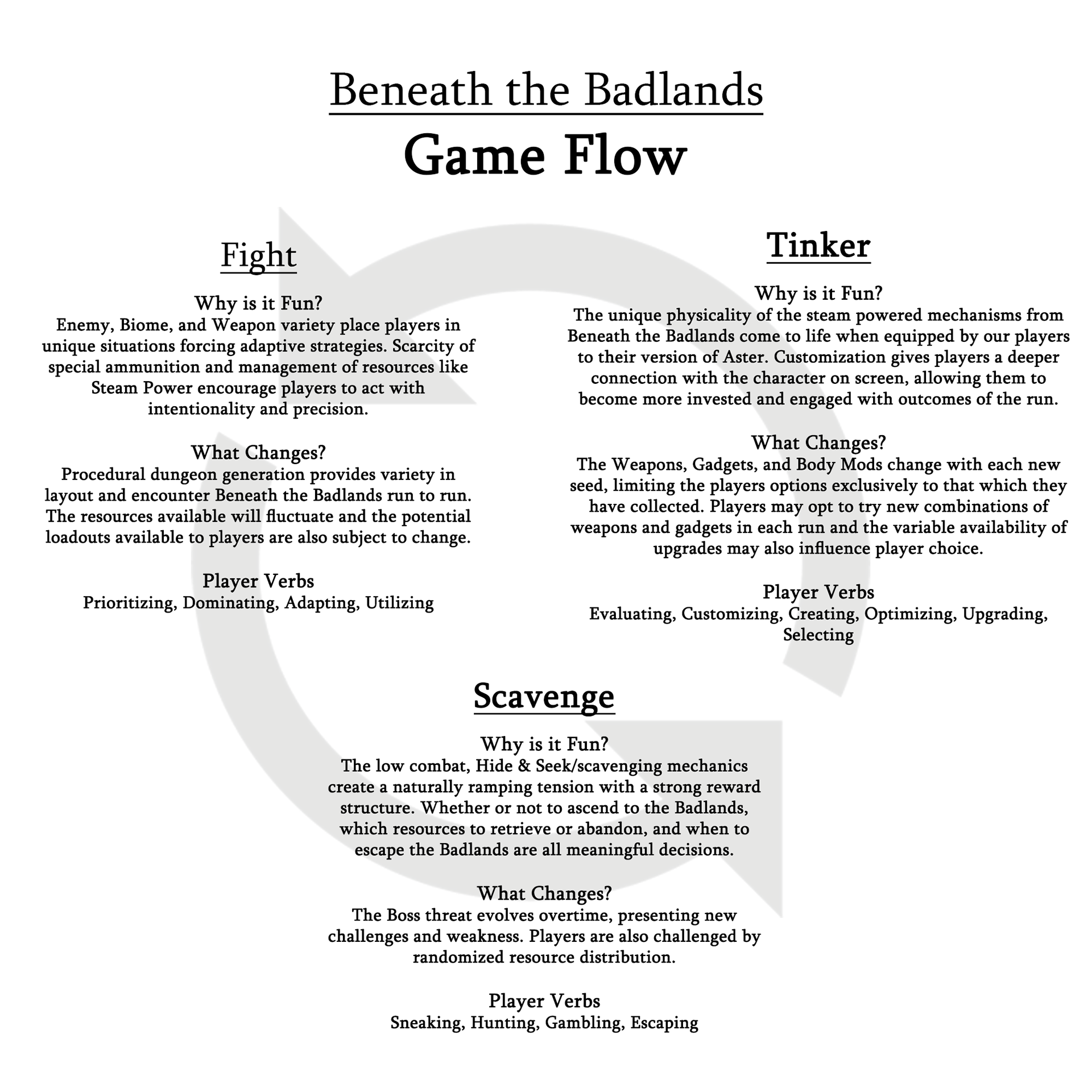
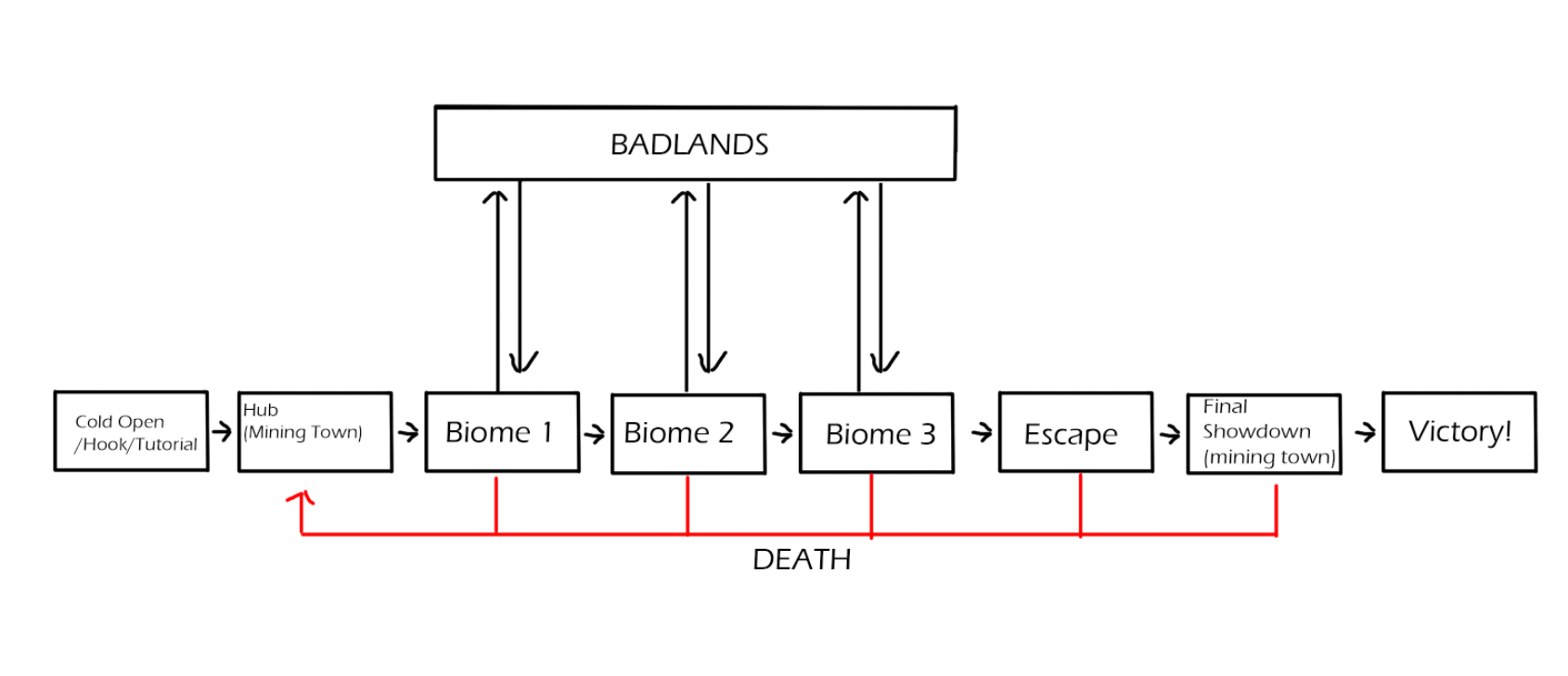
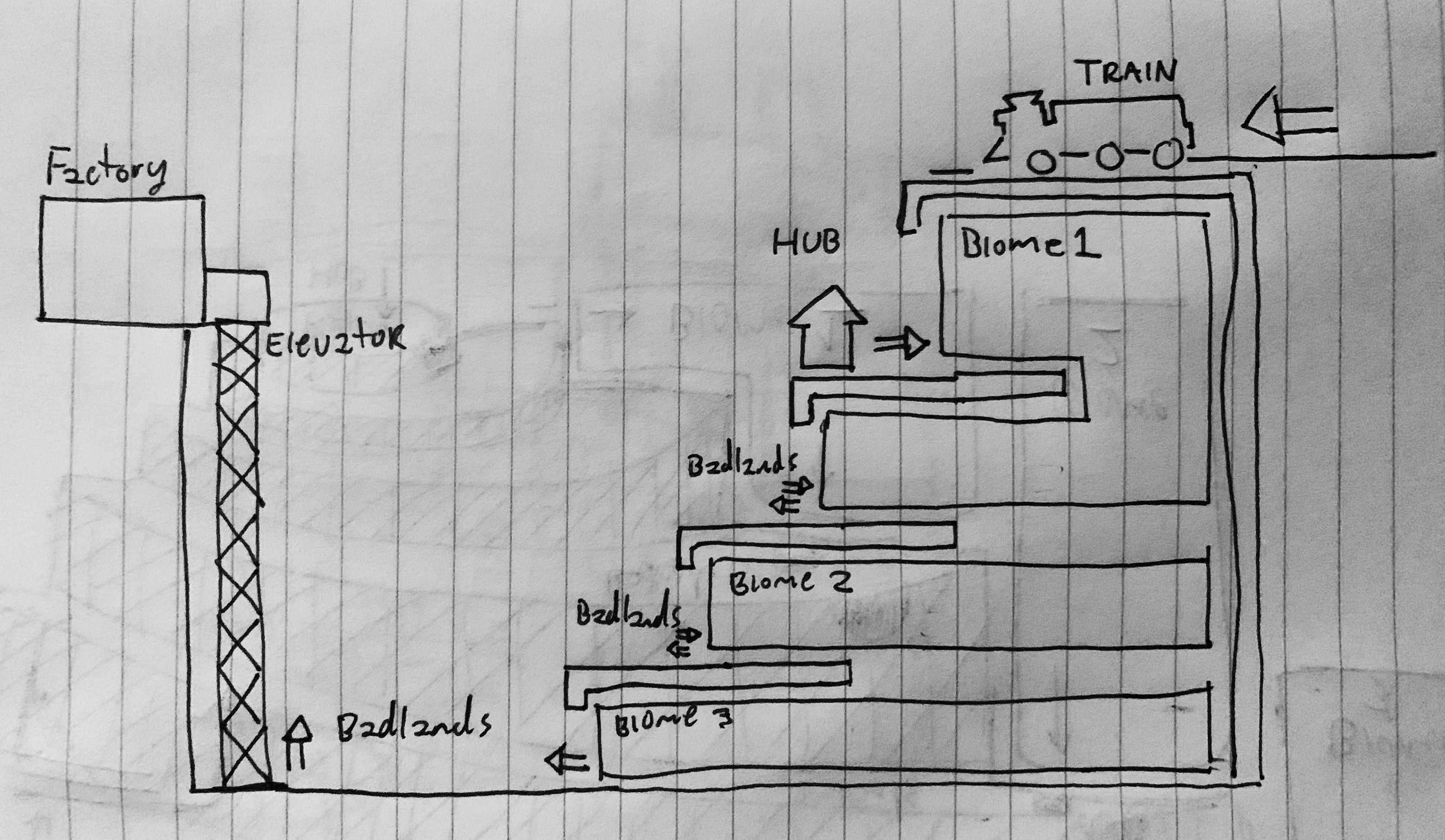
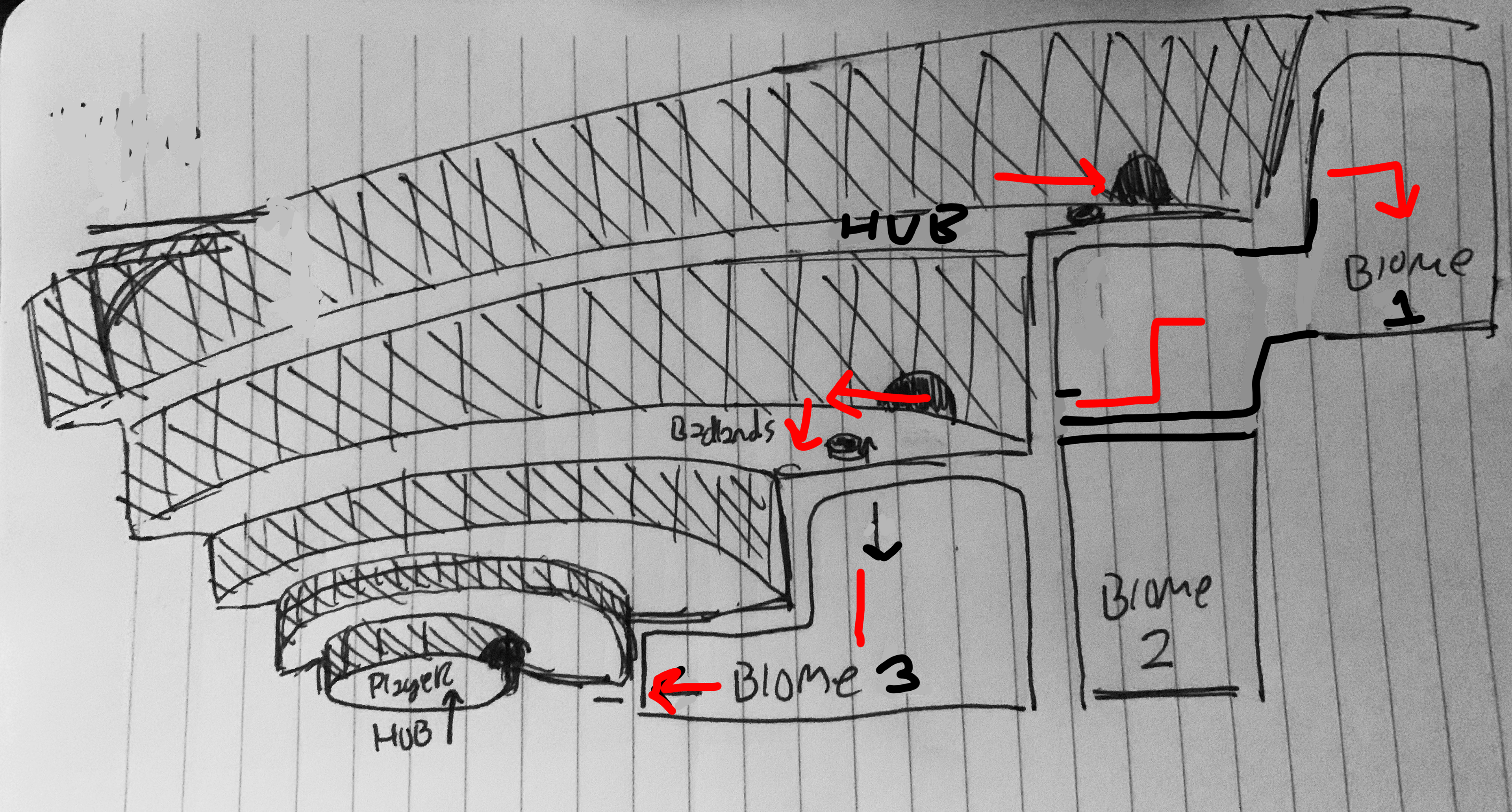

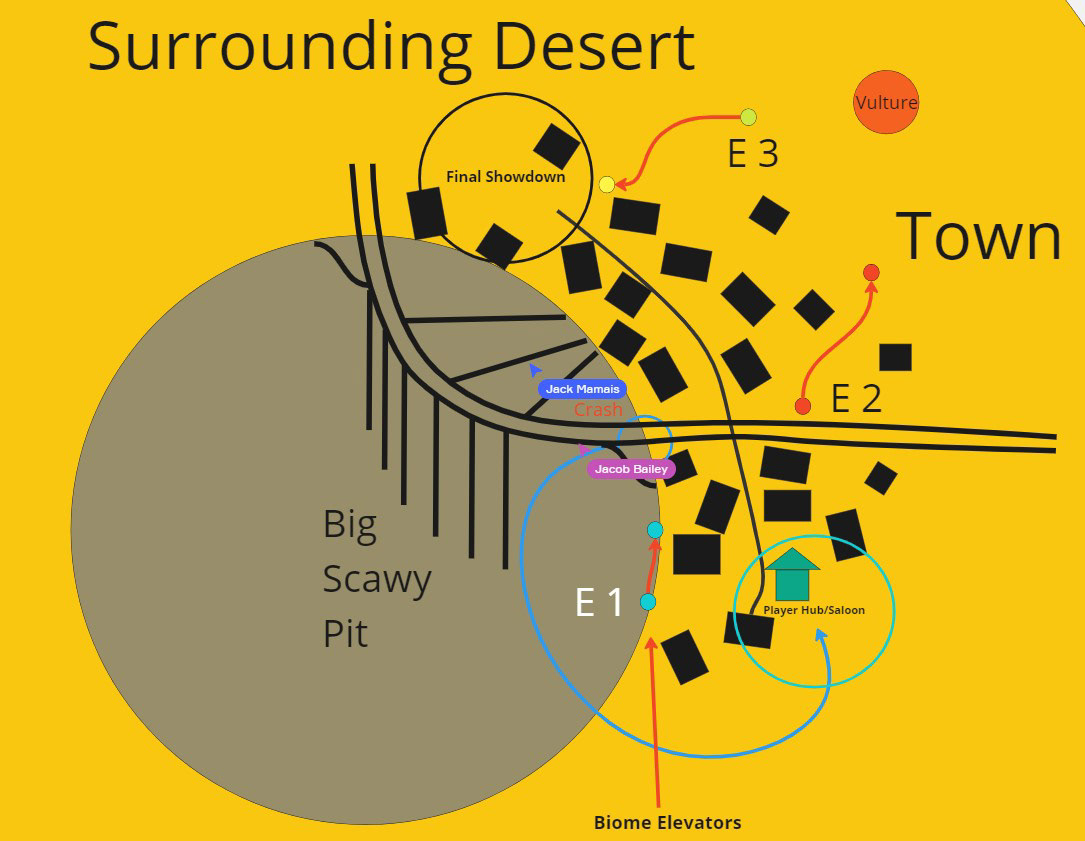
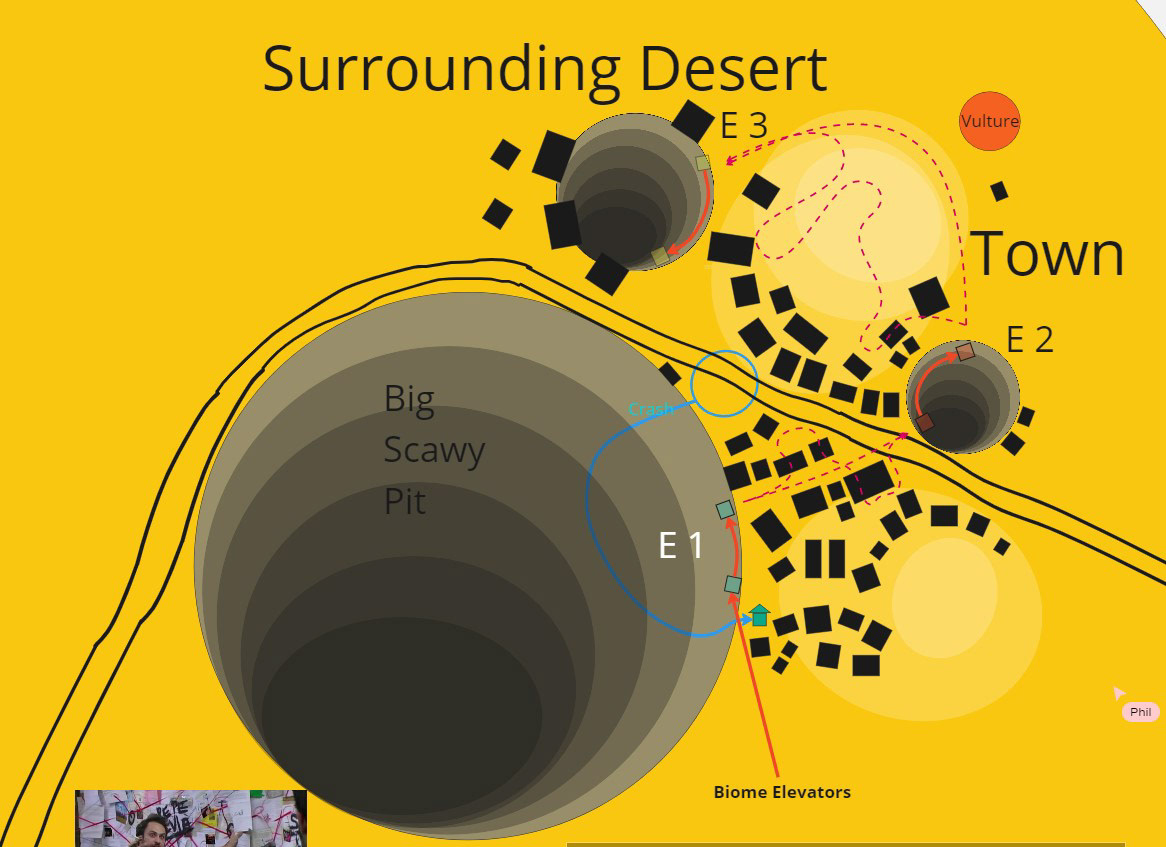
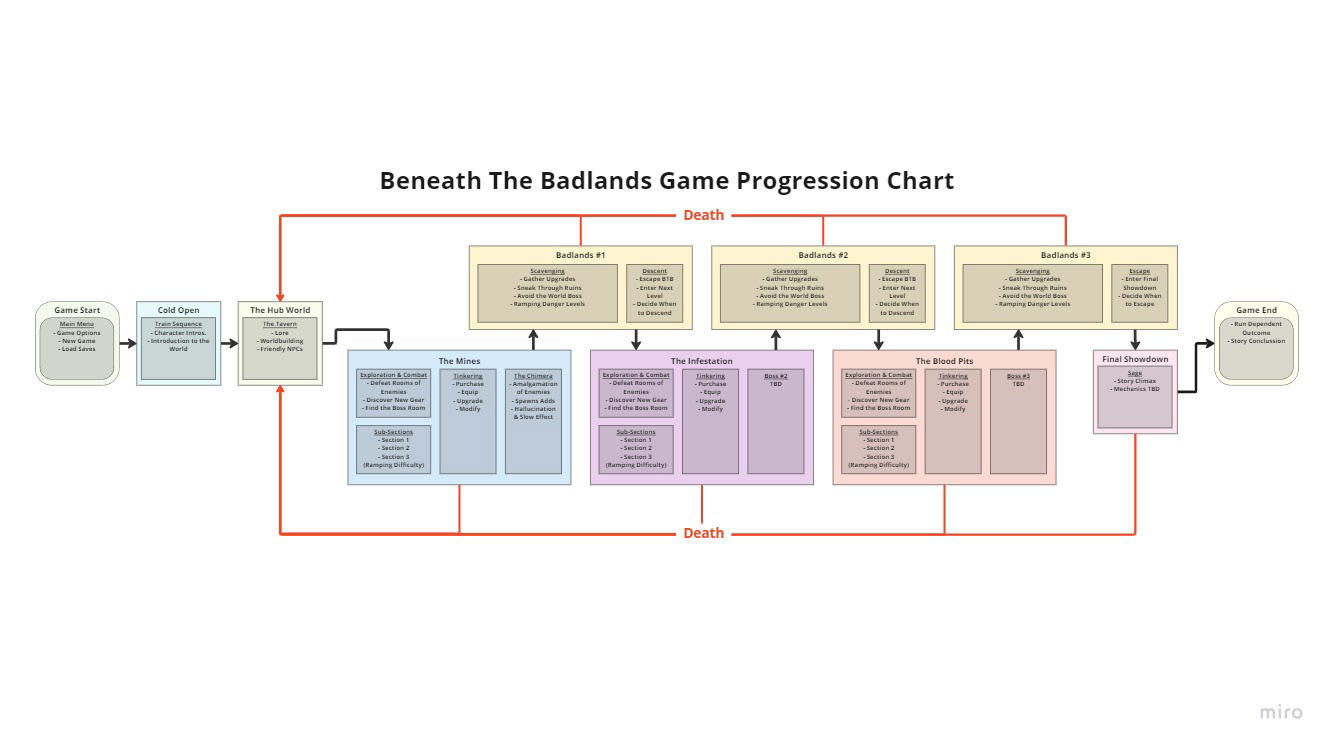
Early Development: First Pass Weapons Sprint
As production finally went underway, I was heavily involved with the design and development of Weapons, Gadgets (Active Abilities), and Body Mods (Passive Abilities).
Very early on we drafted a template for design documents of this type to help cutaway extraneous detail and capture the most critical elements for our prop artists and animators to reference. This template included a section for drawings, images, and diagrams to better communicate the ideas on the page, sections describing primary and secondary functions, and a standardized stat block for easier comparison.
Progress on each weapon was tracked in a google sheets document where links to each document could be found alongside brief descriptions and indications regarding which step was complete, impeded, or in progress.
It was during our second sprint that many of the weapons, gadgets, and body mods began to be prototyped. As scrum master for this weapons-focused sprint, I prototyped the majority of our weapons and communicated many of our ideas to the prop artists who began modeling them.
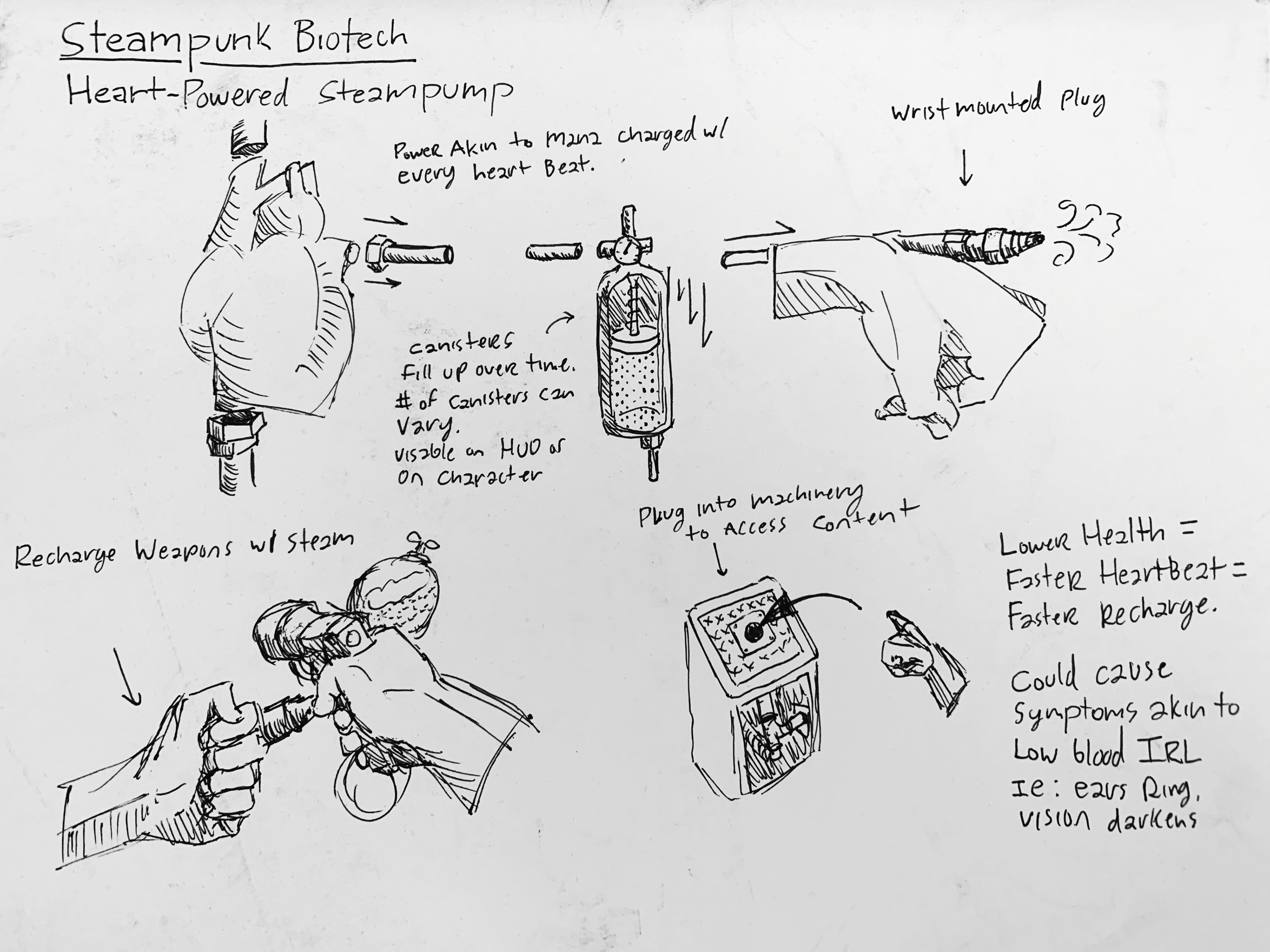
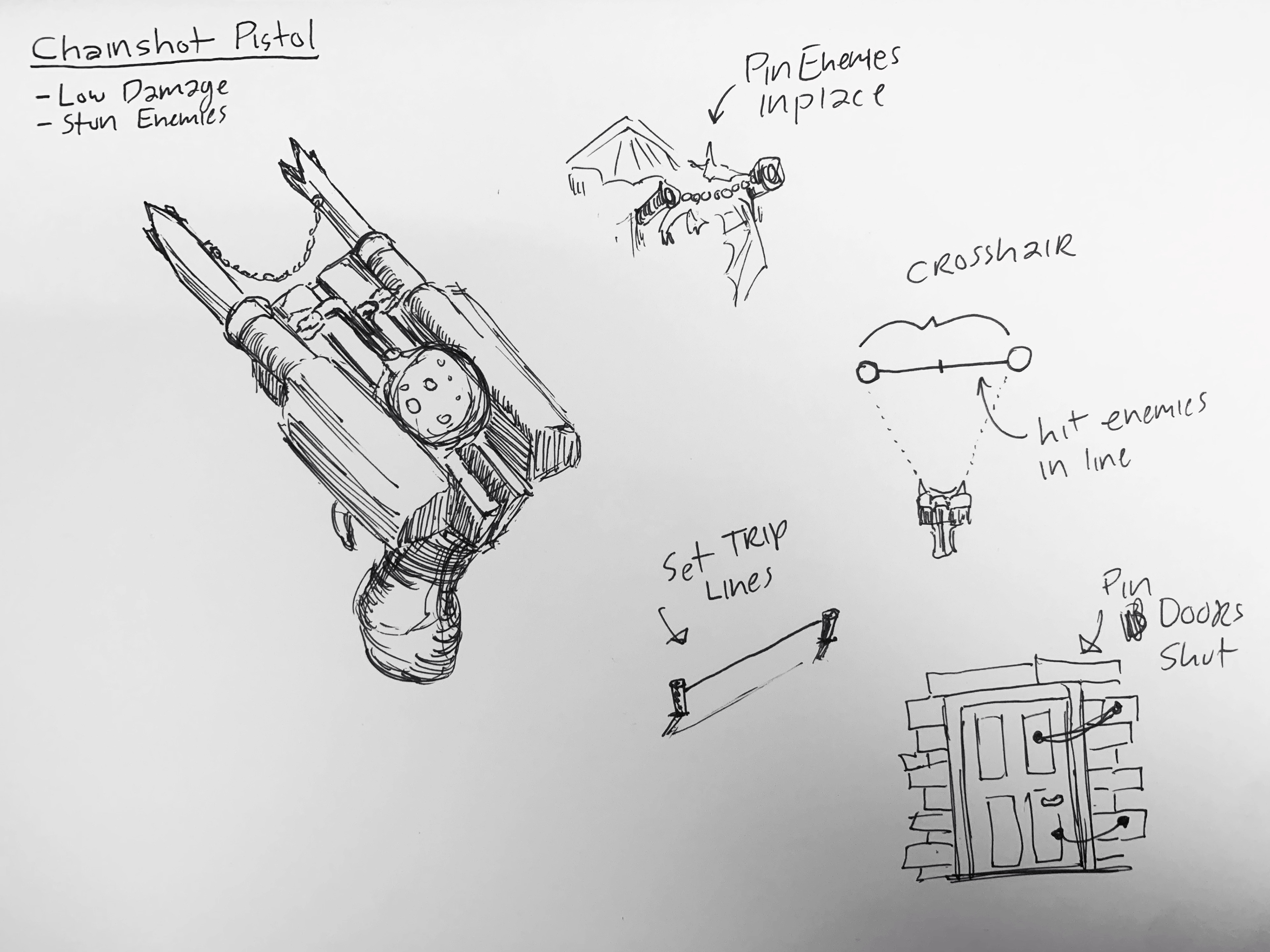
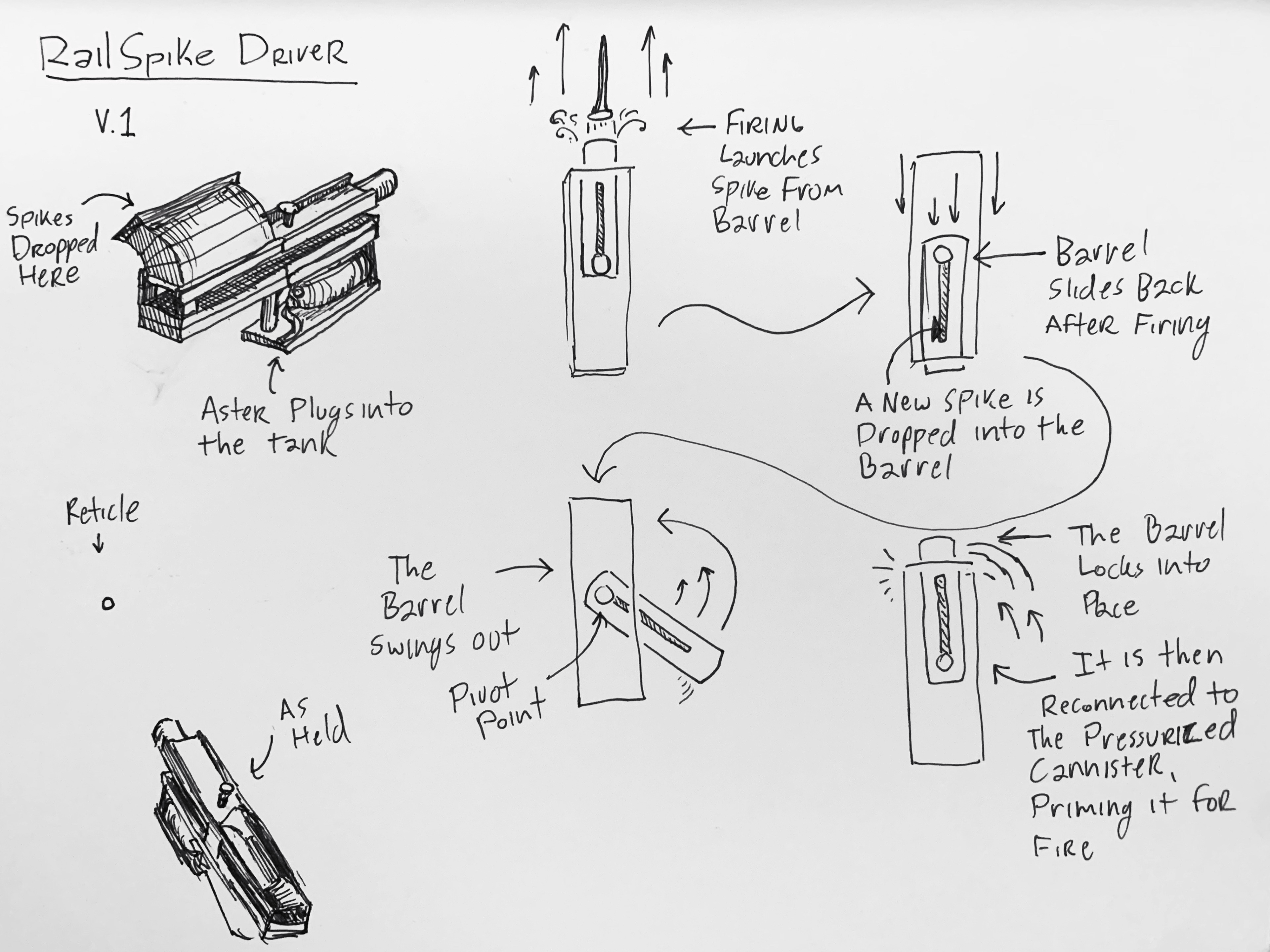
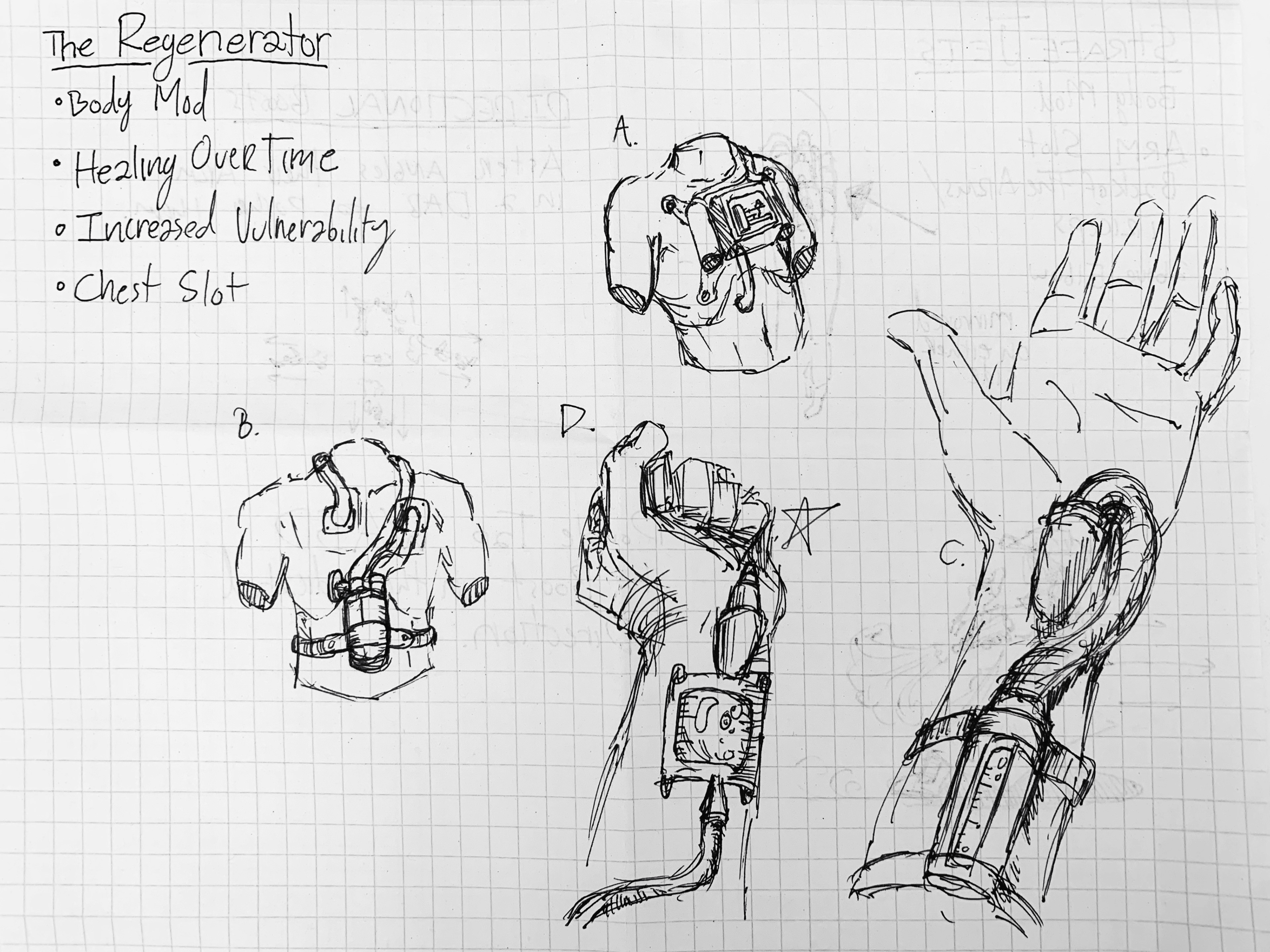
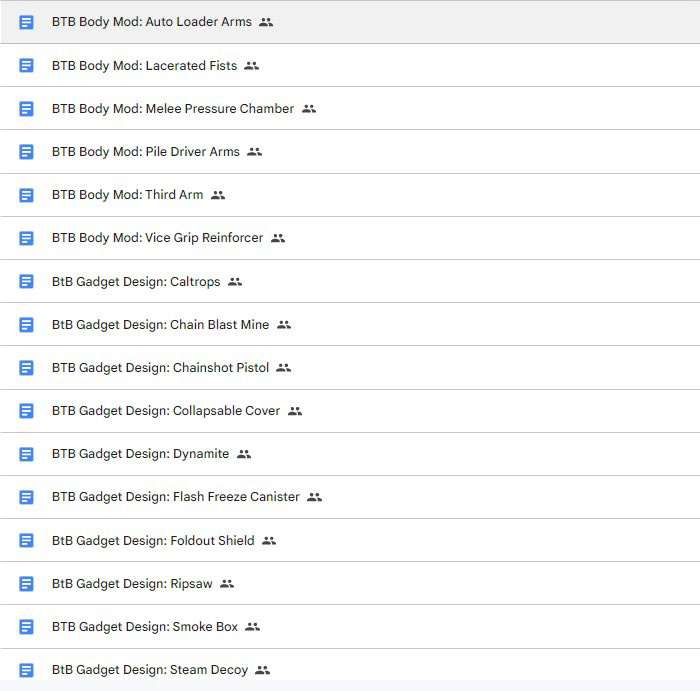

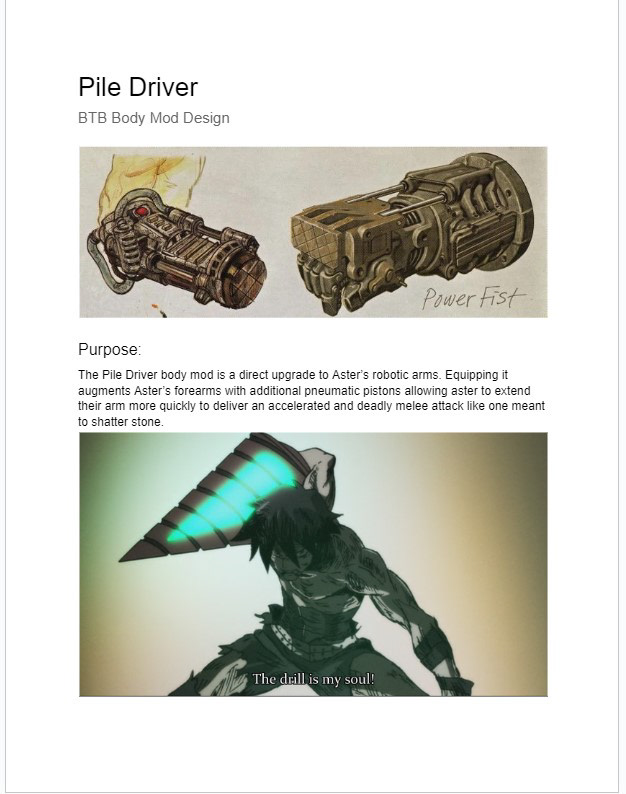
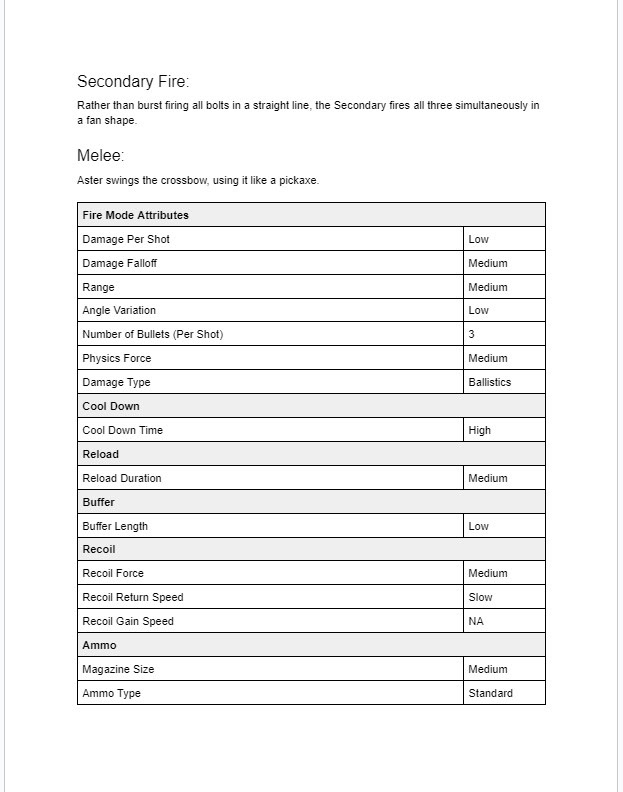
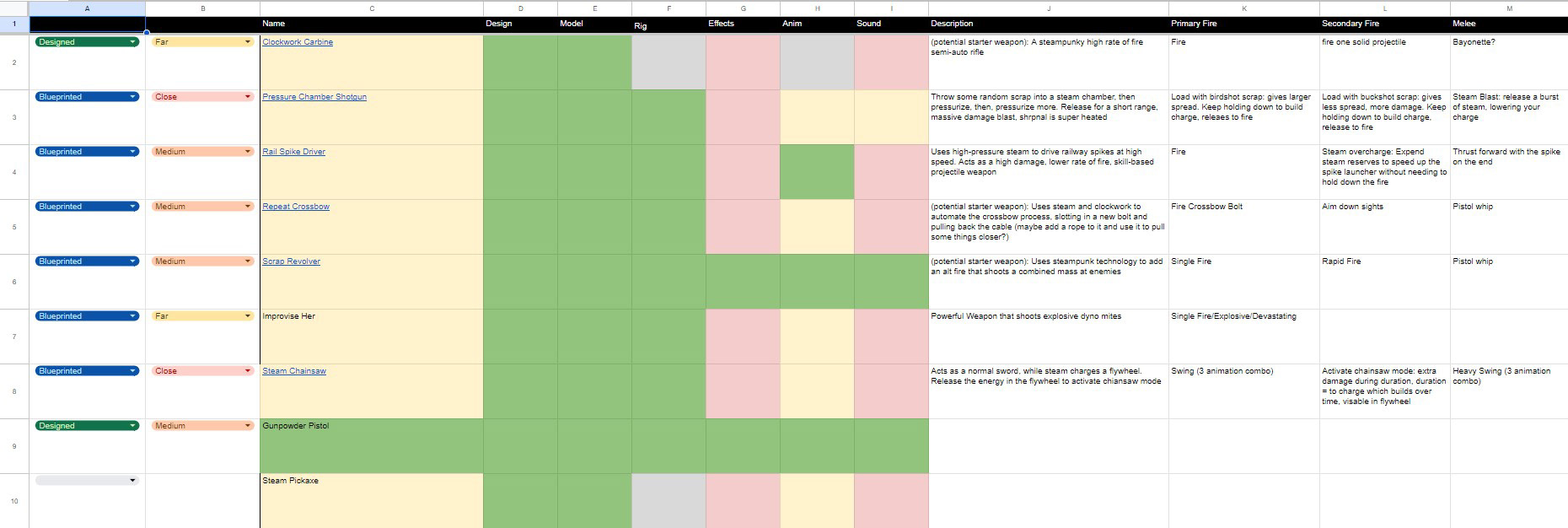
Early footage from our Player Zoo
Early Development: Documentation
As we got further into production, I put more of my focus on filling out the loot pool of our game and thus wrote a couple dozed design documents for various Weapons, Gadgets, and Body Mods.
It was also around this point that many of our artists had begun to come through with models and animations for various gadgets. I then turned my attention to the integration of these assets into the preexisting block-out tools that myself and the other programmers had created.
In the process of doing so, I became more acquainted with AnimNotifies in Unreal and we developed a more comprehensive lockout system to prevent actions from overlapping and overriding one another.
Early Development: Level Adjustment
During the fourth round of sprints, effort began to shift towards preparing a playable demo for GDC 2023. This meant that my time moved away from weapon design and towards level design and blockout. At this point we became aware of a lack of environment artists on the team which led to myself and other designers doing much of the basic set dressing to save our artists time.
In this process, we realized how large and labyrinthine many of the early level blockouts were - prompting a push for more simplified layouts.
The first of these simplified levels was the level "Spiral" which I designed in response to these concerns.
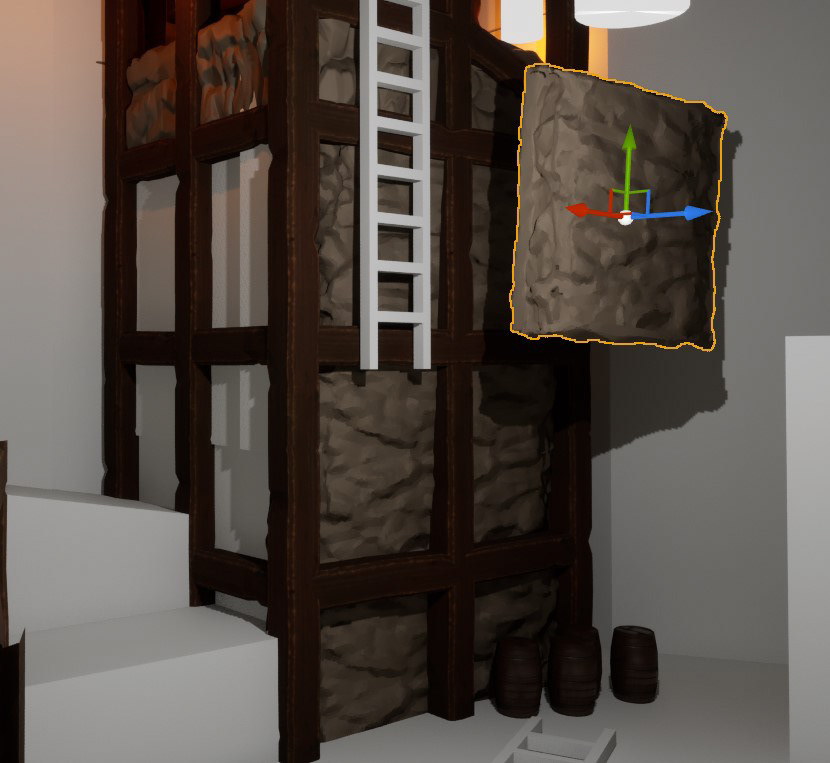

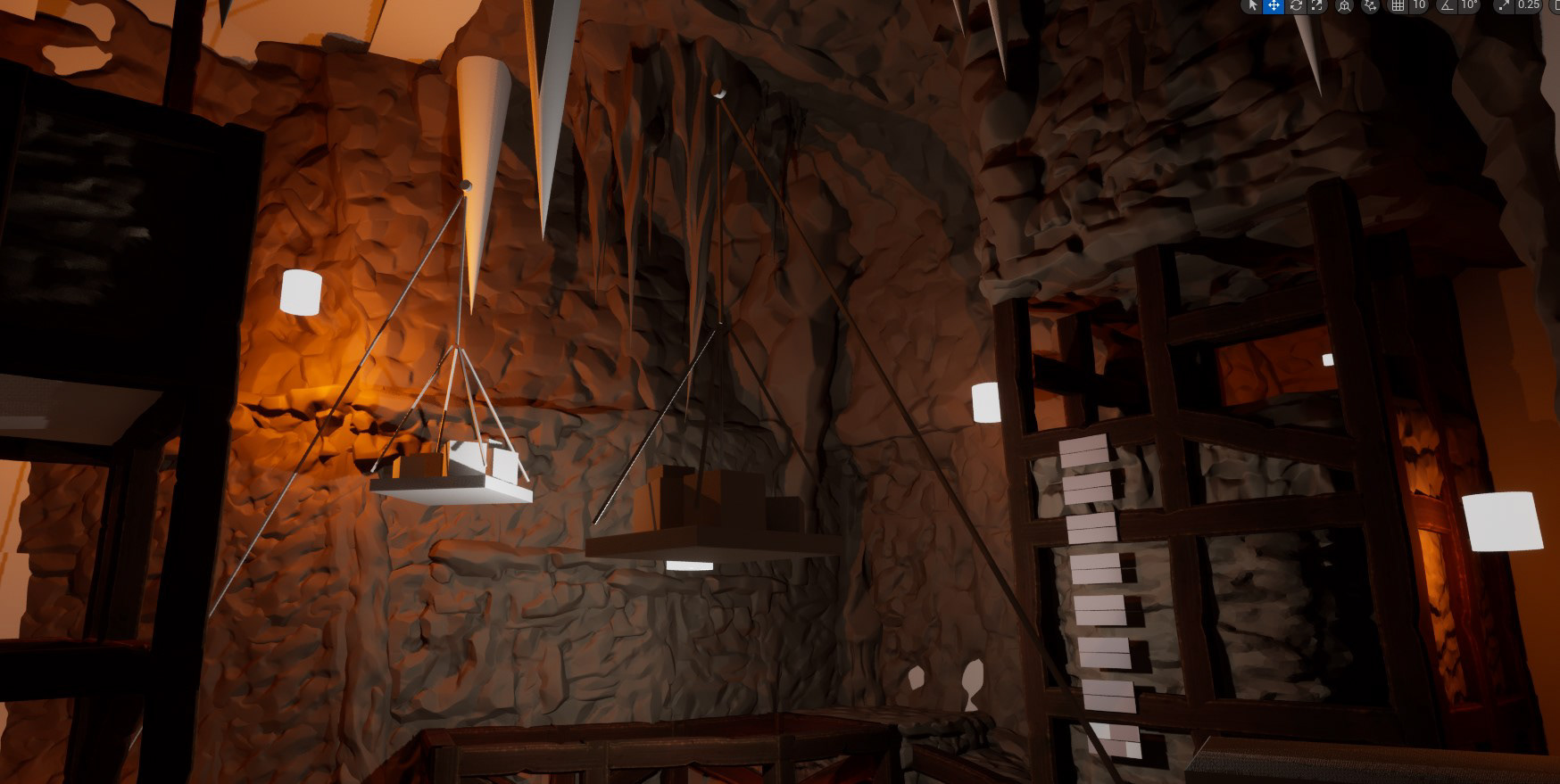
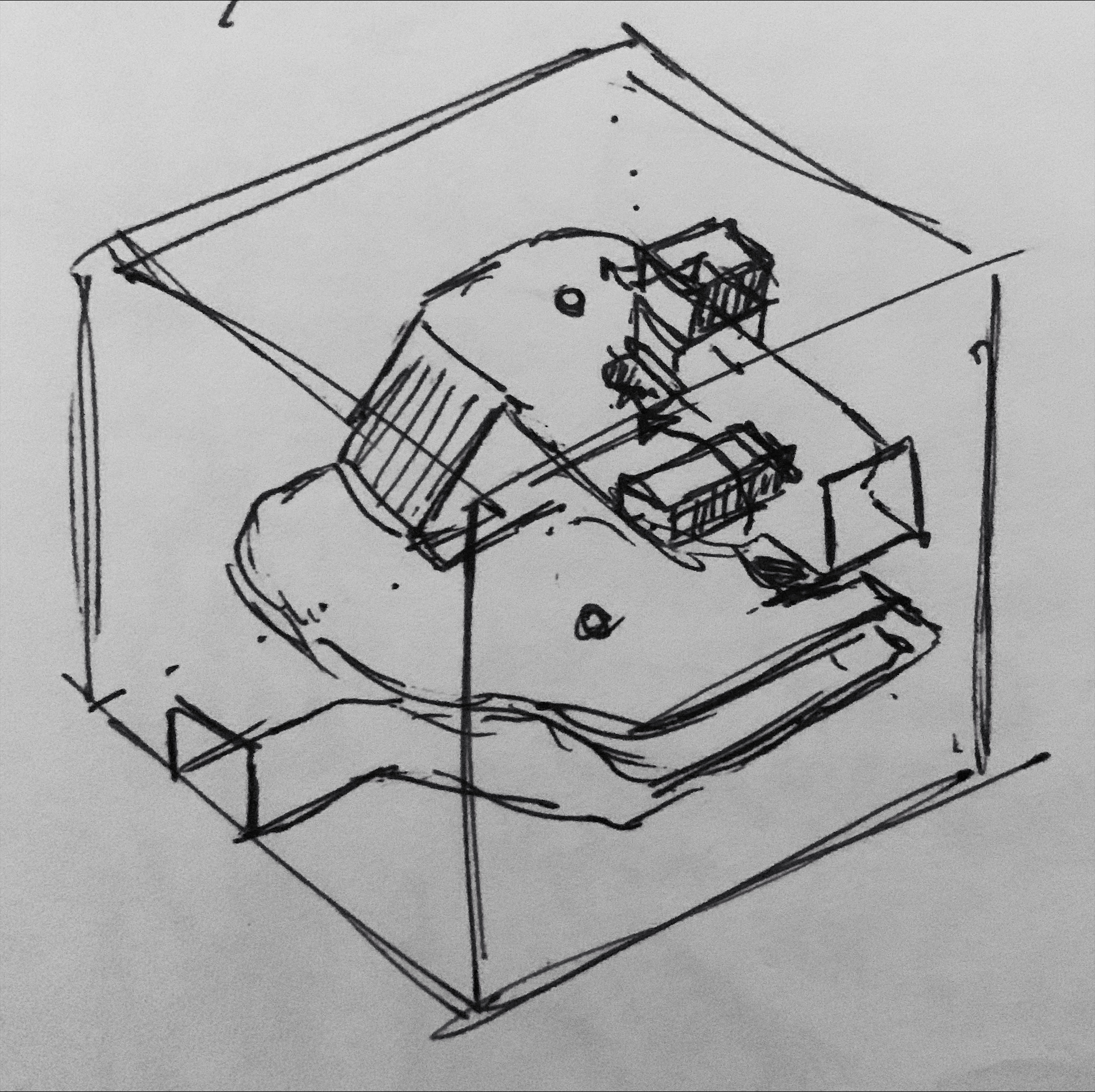
Sketches of "Spiral"
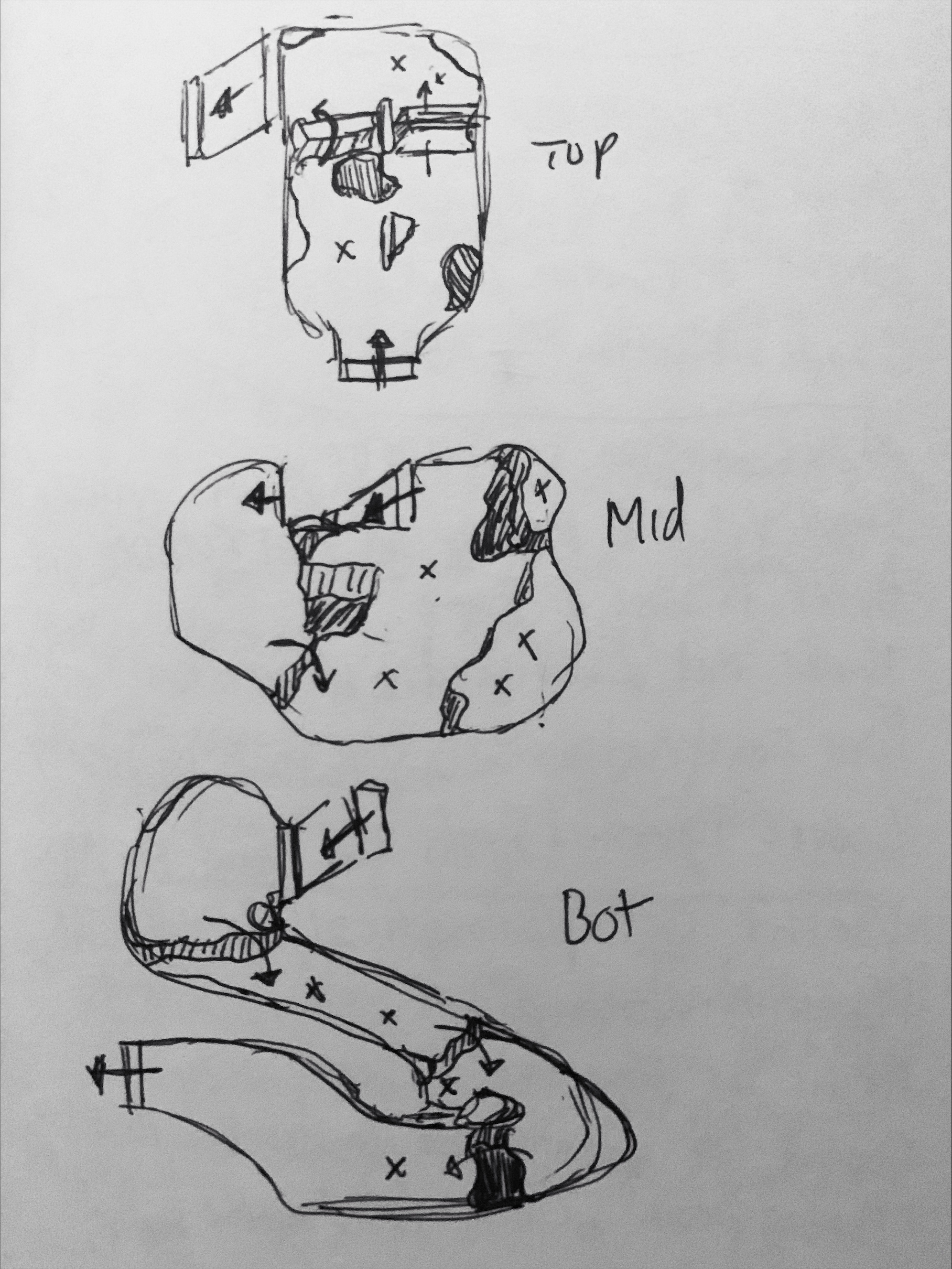
Sketches of "Spiral"
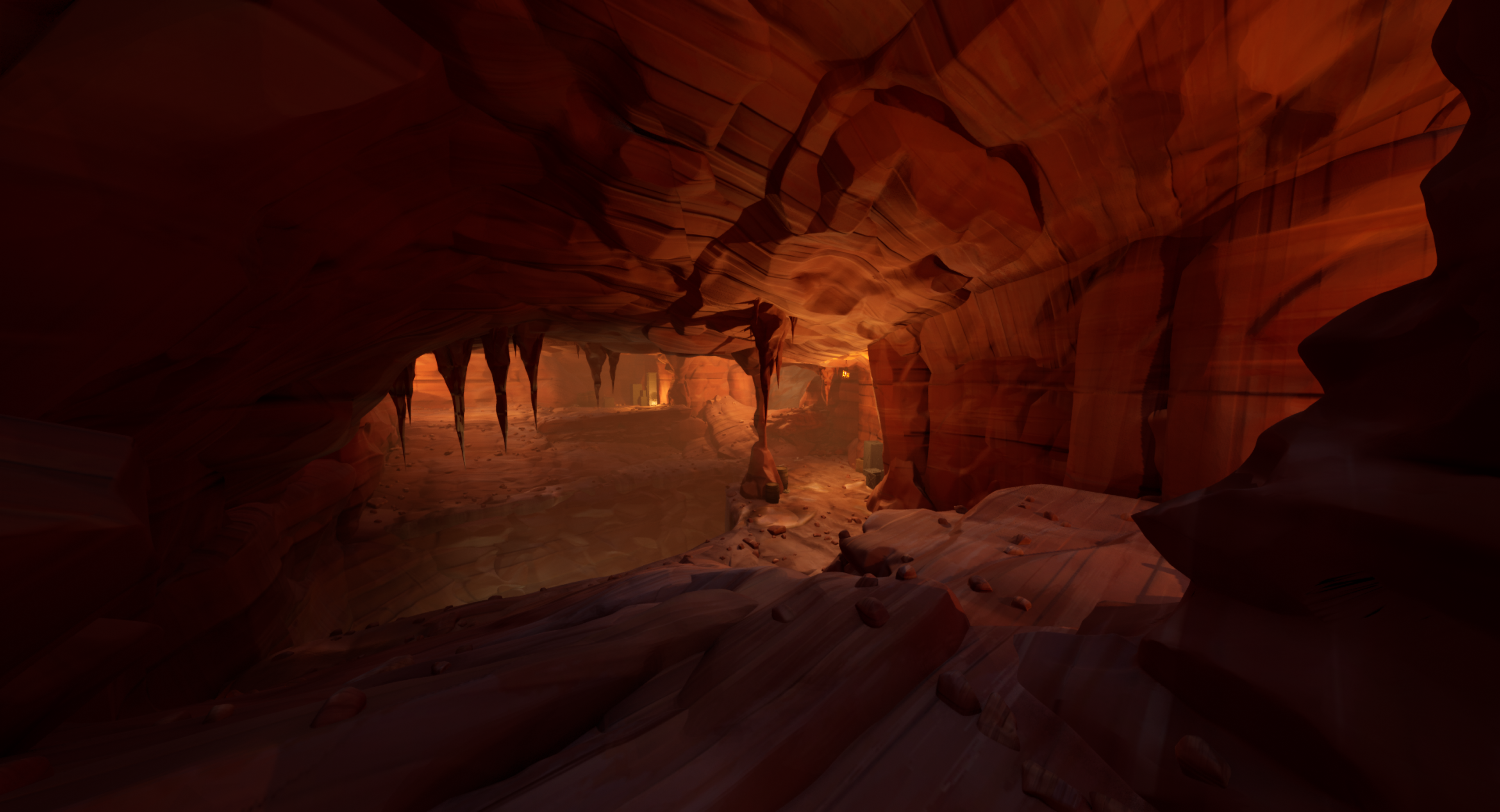
Early Screenshot of "Spiral"
Footage from the level "Open Sky" demonstrating the HUD and Level Design
Early Development: Pre-GDC
With GDC rapidly approaching, the whole team was in crunch to make the demo as polished as we could make it.
For me, that meant entering the world-partitioned Town level that the Art Team had been working in for the past month and populating it with enemies and encounters to tutorialize and demonstrate the mechanics of our game.
The intended sequence was as follows:
Introductory cutscene > Player exits the Saloon > Player finds elevator unpowered > Player follows pipes to Midtown Contraption > Player pulls lever >
Steam power restored > Enemies spawn in > Players fight wolves > Players fight parasite zombies > Players enter the Mines
Introductory cutscene > Player exits the Saloon > Player finds elevator unpowered > Player follows pipes to Midtown Contraption > Player pulls lever >
Steam power restored > Enemies spawn in > Players fight wolves > Players fight parasite zombies > Players enter the Mines
This sequence made for a fun taste of the game but a poor tutorial for its mechanics - something I'd correct later in development.
Alongside tutorial development, I was also in charge of implementing controller support and rumble to make playing our demo as simple as possible for GDC guests.
Footage of Demo Tutorial Level pre-GDC
Late Development: Post-GDC
During GDC we showcased our game to a great number of developers from all across the industry and received a ton of useful feedback.
The bullet point list I recorded had over 40 points of unique feedback with a common thesis: Lack of Focus.
The number of small barriers between the player and immersion was large. Visual indicators of what the player is supposed to do, what they can do, what they are doing, and how what they are doing is effecting the world were not as strong as they should have been. Levels were unclear, UI elements hard to read, and control were often janky and slow.
A common regret among the design team was the lack of focus on the procedural dungeon and the actual core gameplay loop. This regret helped motivate the second half of development where the team returned with vigor and new focus.
At the start of this new sprint, I lead the level design team with a couple new team members dedicated to level design and lighting. With new concept art and a new direction, I put together the Level Status Tracker and we began rapidly developing new levels with much higher polish than the levels we'd created previously.
I personally began developing the boss arenas for the Amalgamation boss fight, the Vulture boss fight, and the final boss fight with Sage.
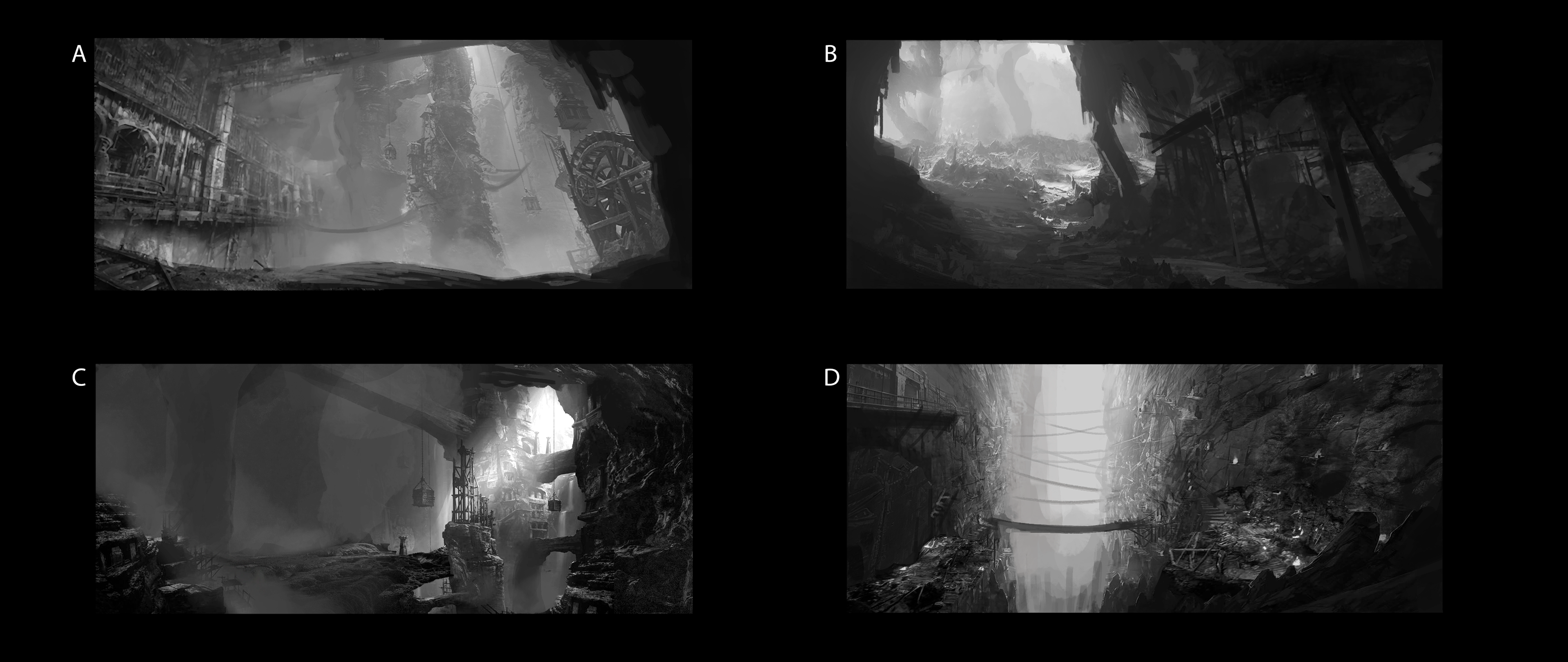
Cave Concept Art by Ari Zaritsky
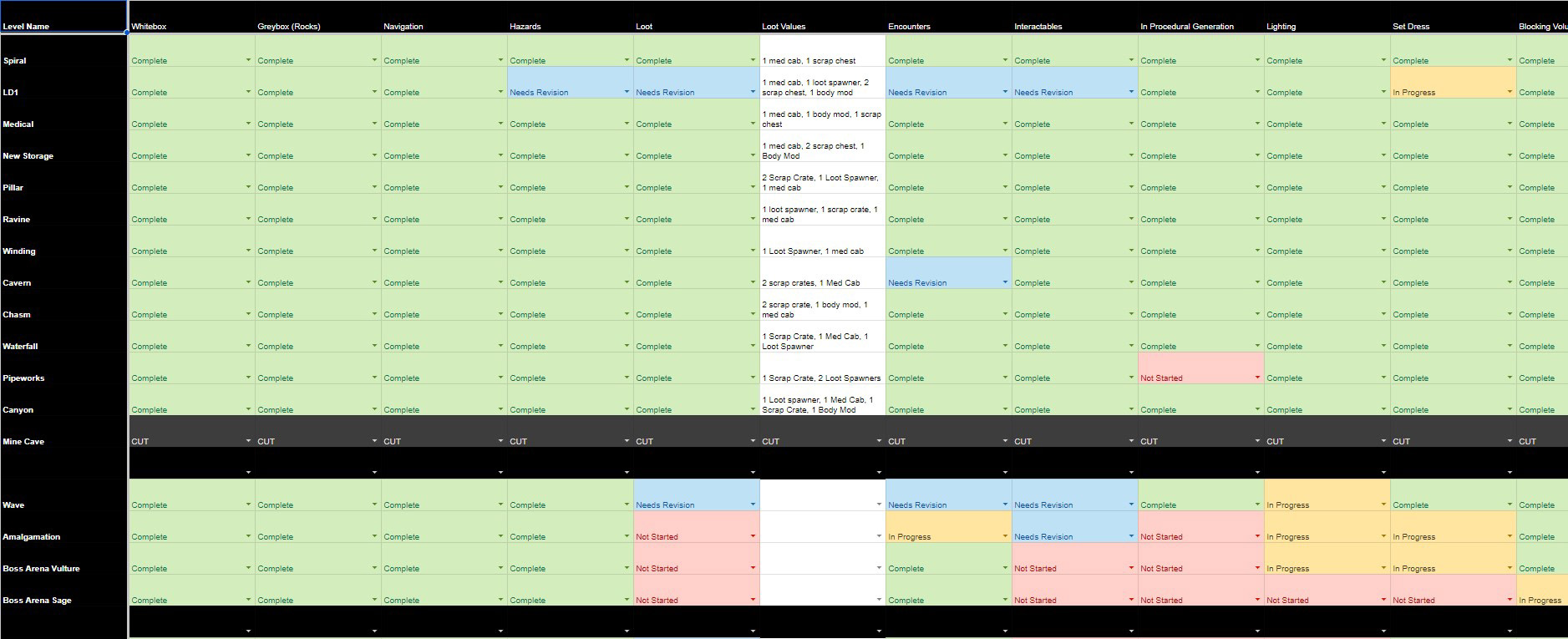
Level Status Tracker
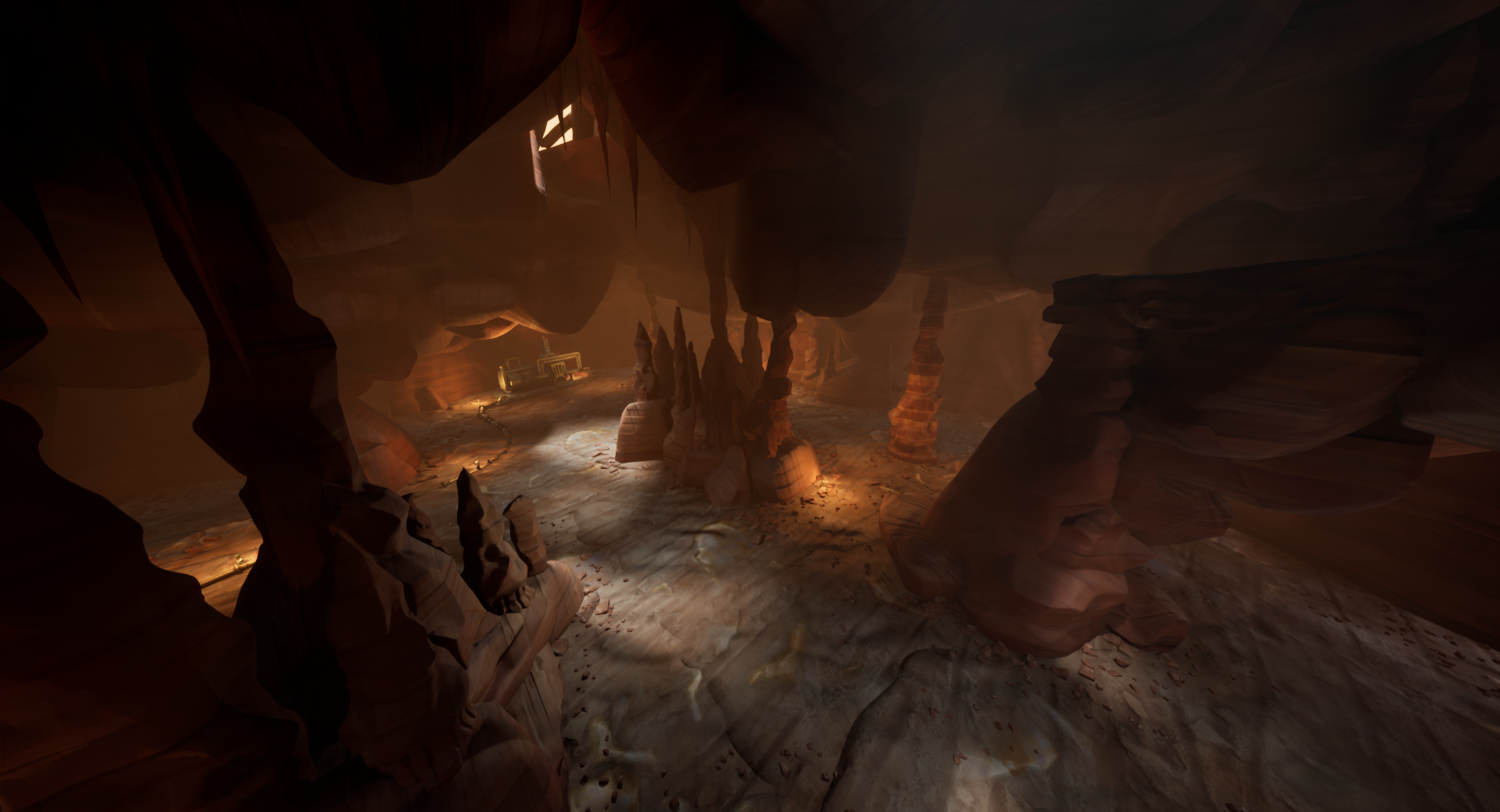
Monster Wave Arena with new Lighting
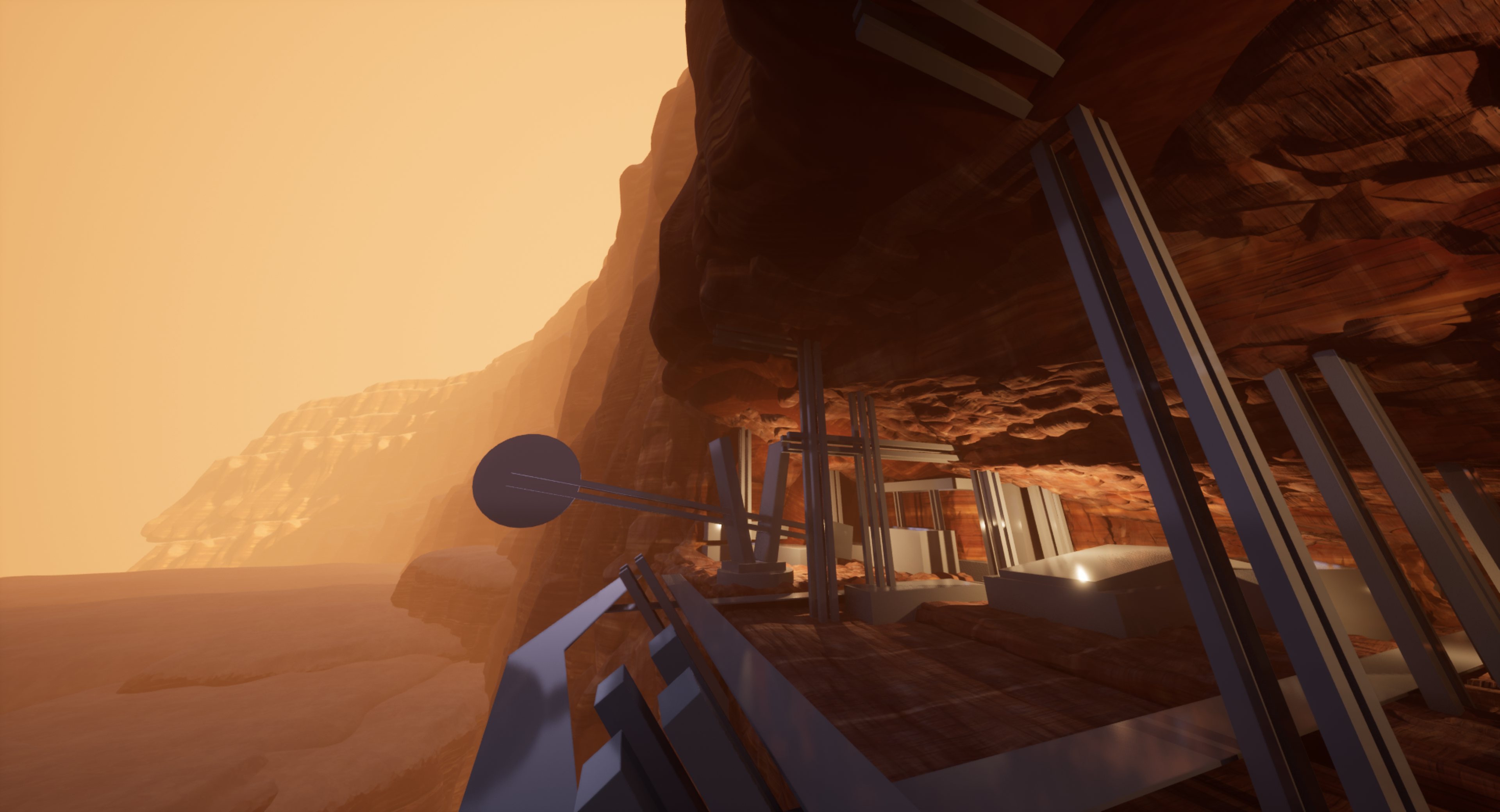
Vulture Arena Blockout
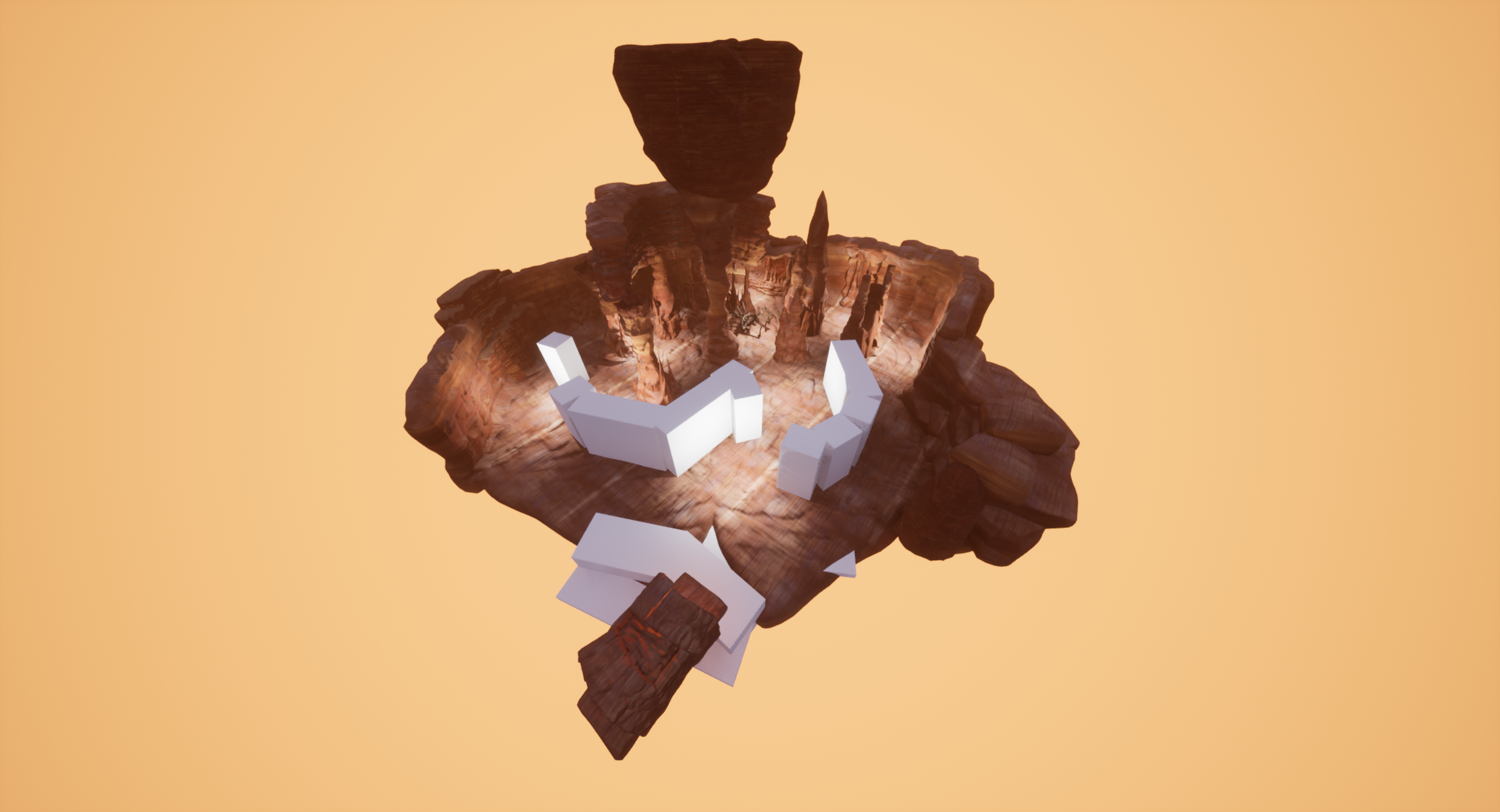
Amalgamation Arena Blockout
Late Development: Level Leadership
It's worth noting that at this point, the team needed to reevaluate our scope, our goals, and what we intended to accomplish with our remaining time as a team. An important decision that came out of these questions was the vast reduction in scope where we decided to complete 1 biome instead of 3, cut a large number of enemies in development, and removed the physical HUD in favor of more traditional UI.
Myself and the rest of the design team established core Design Pillars to ensure all future elements remained consistent and polished.
Around this point in time, I was promoted to the role of Level Design Lead.
As Level Design Lead, I continued to collaborate with my designers. I would polish and refine navigation while also populating each level with loot, hazards, and enemy encounters. I ensured that each level had an adequate amount of danger, variety, and potential value to encourage players to explore.
While attending to my responsibilities as Level Design Lead I began work on the new tutorial section for our game.
This new tutorial took many cues from the lessons learned at GDC - removing ambiguity and bringing focus to the design. The new tutorial allowed for players to properly learn and experience each mechanic undistracted.
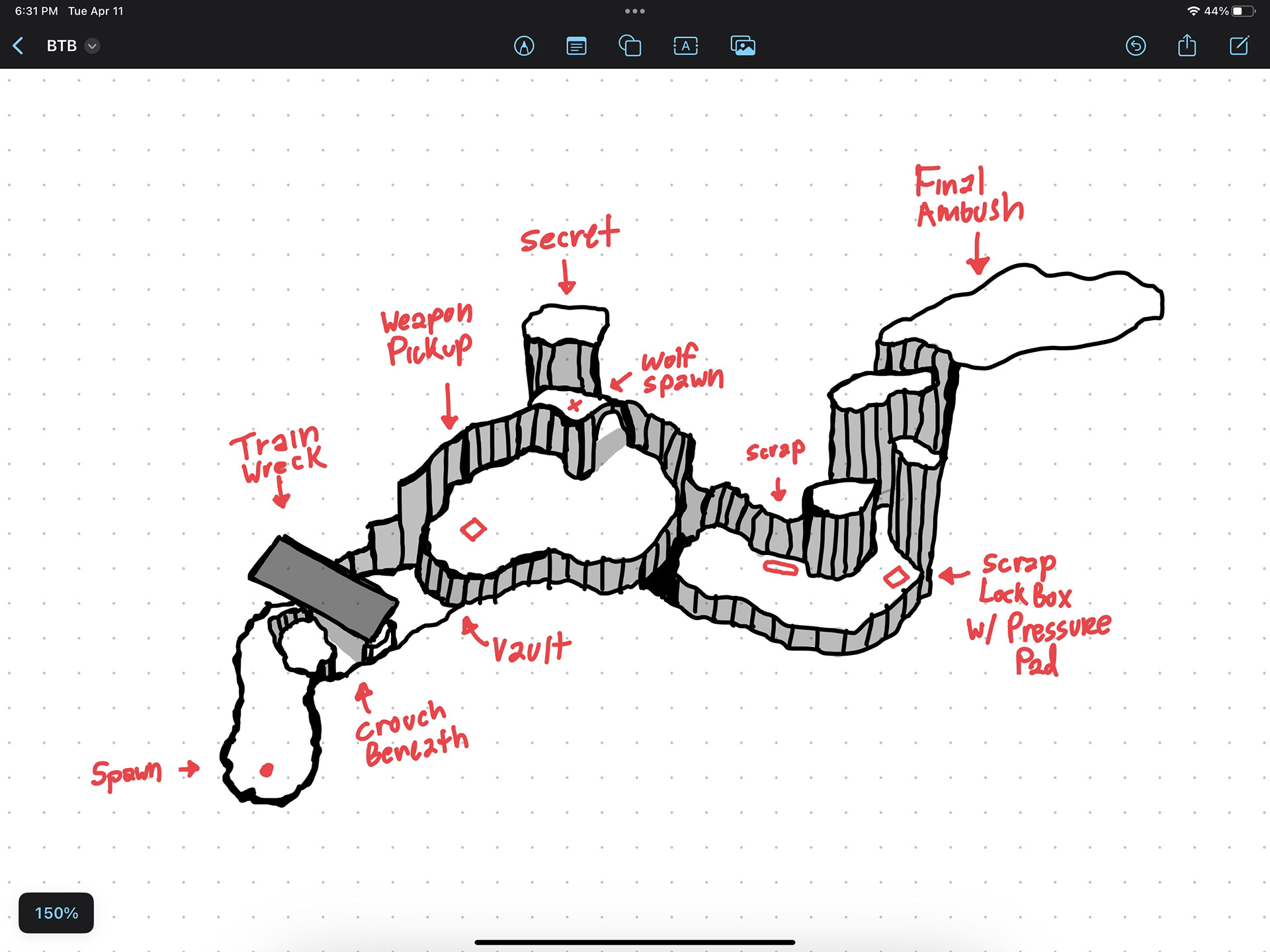

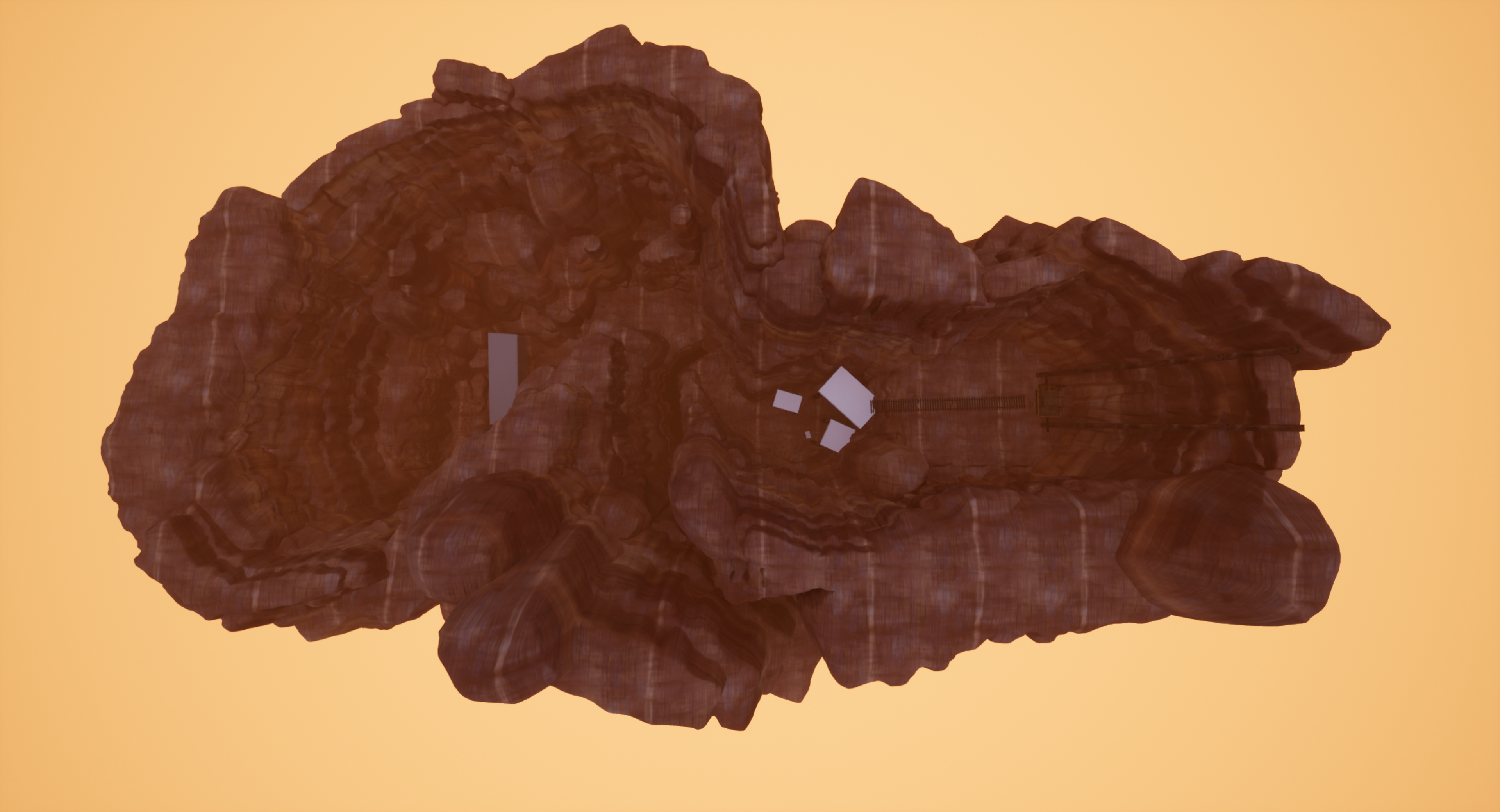


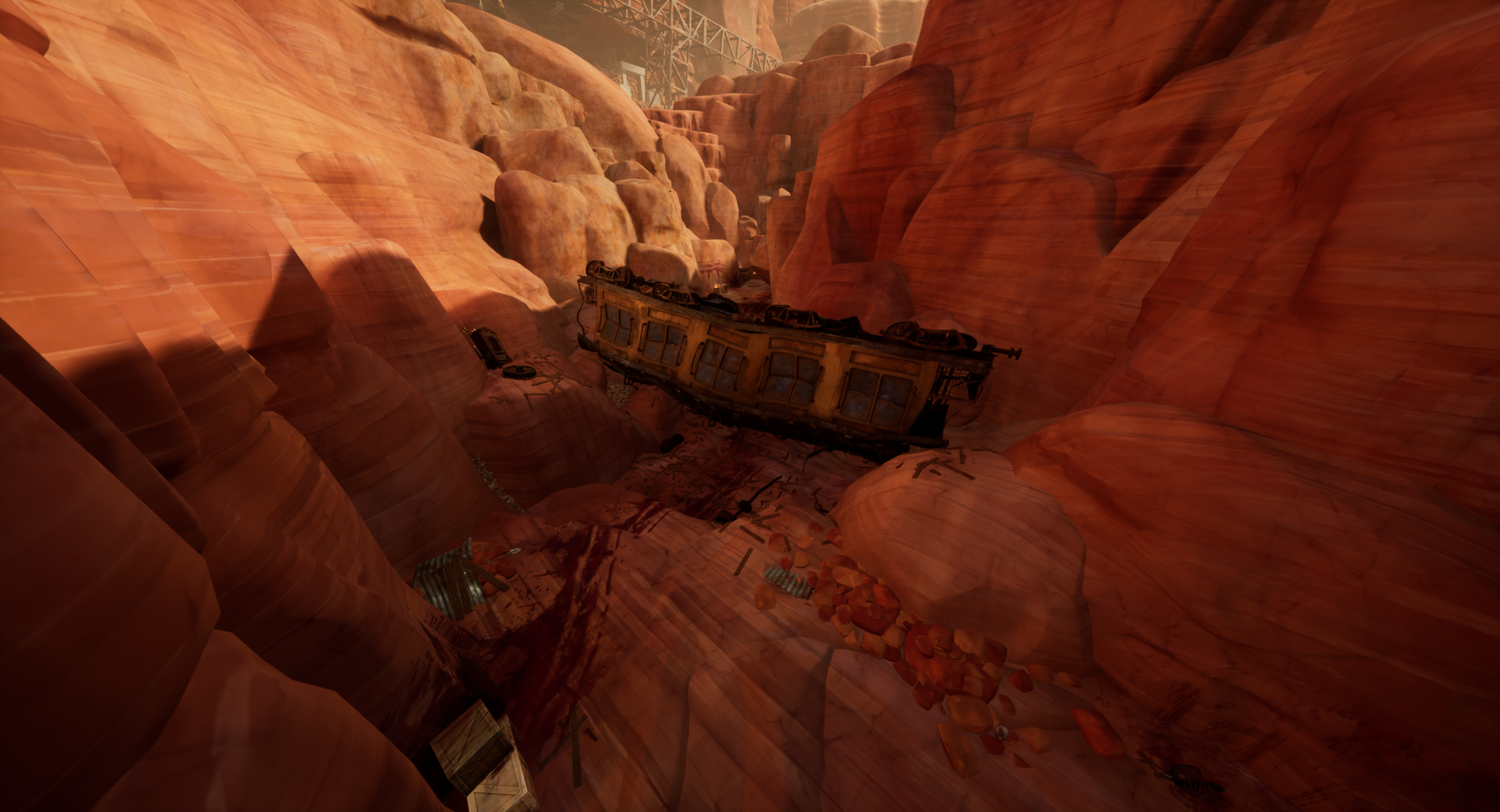
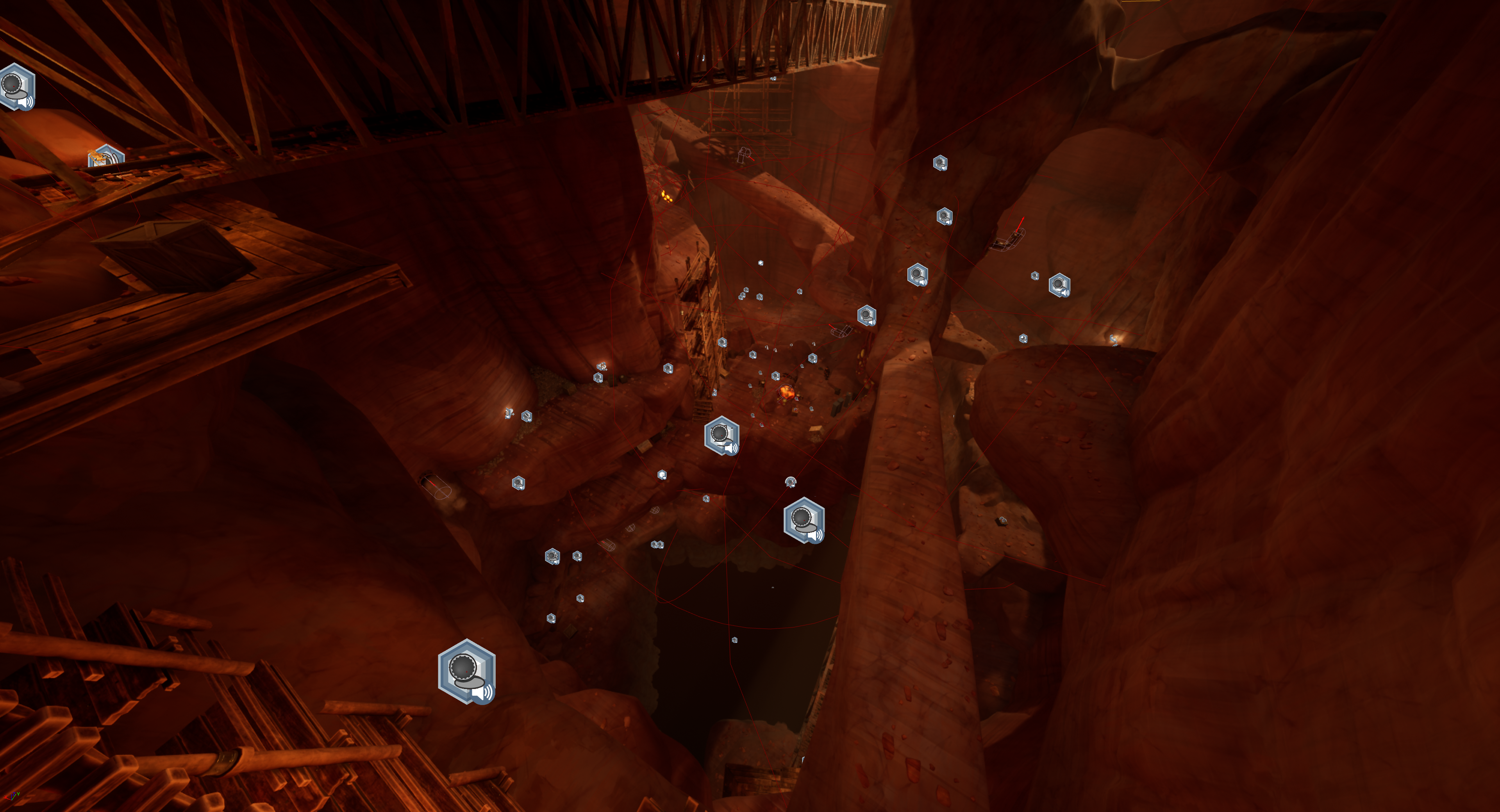

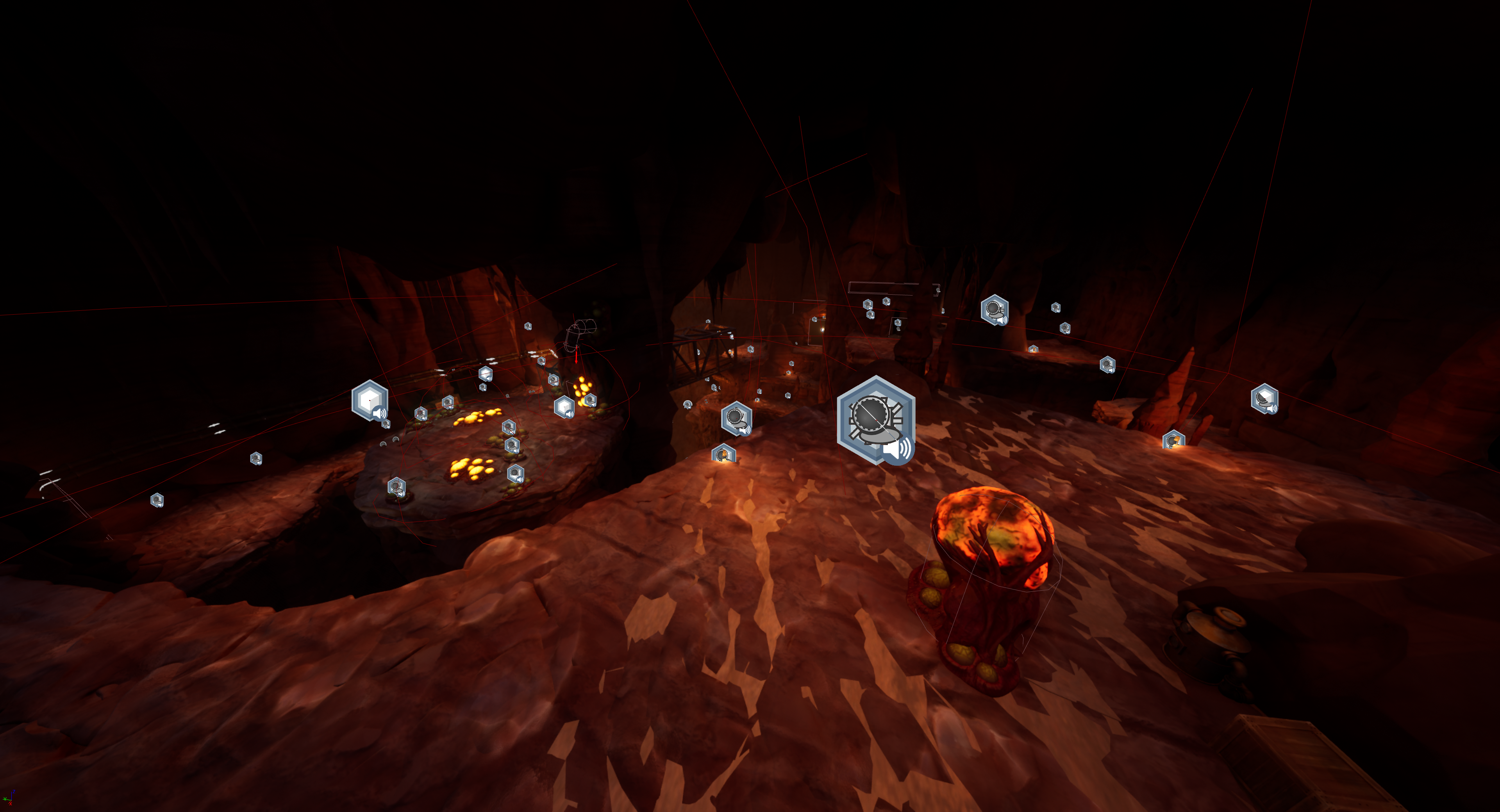
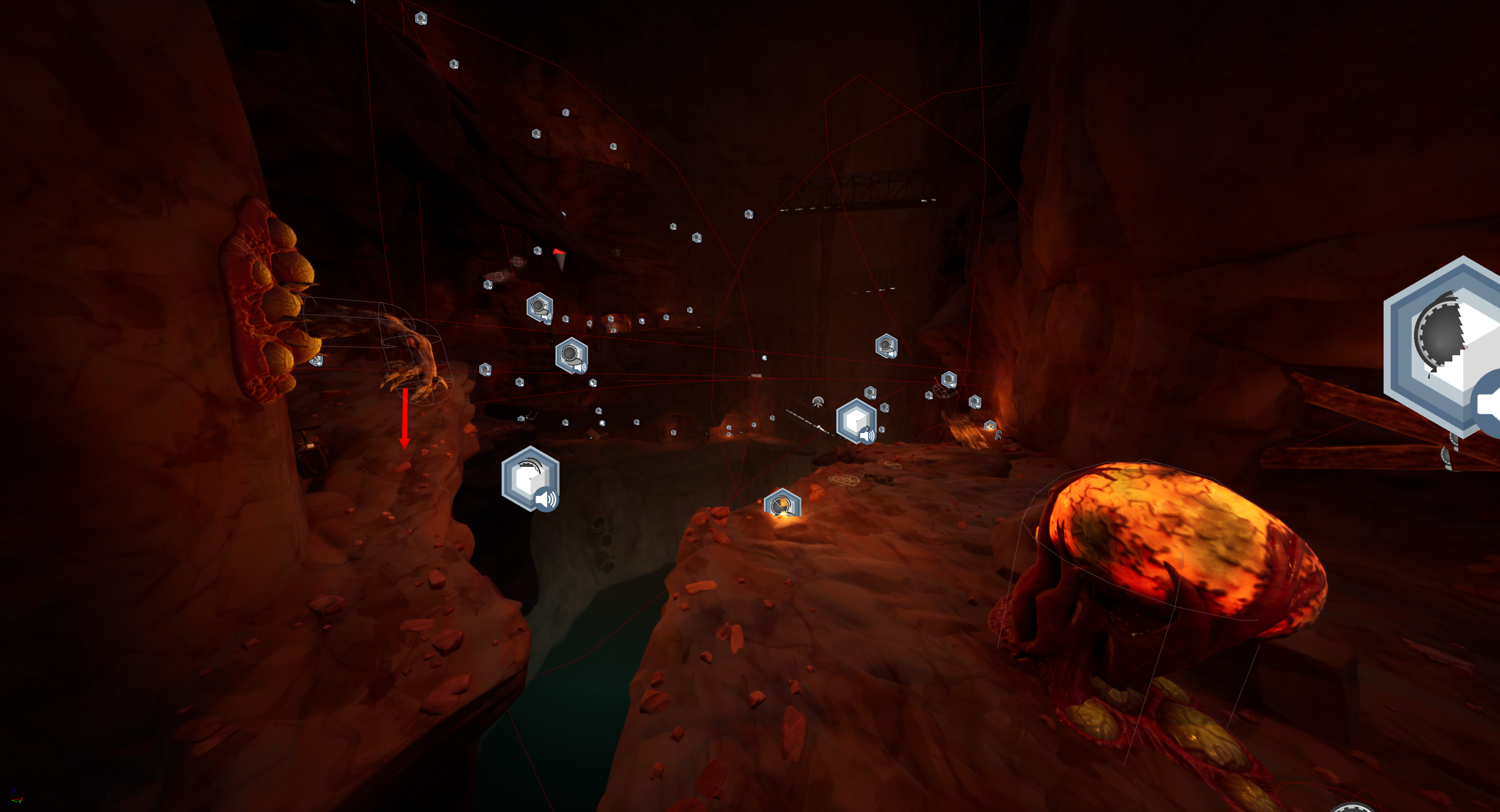
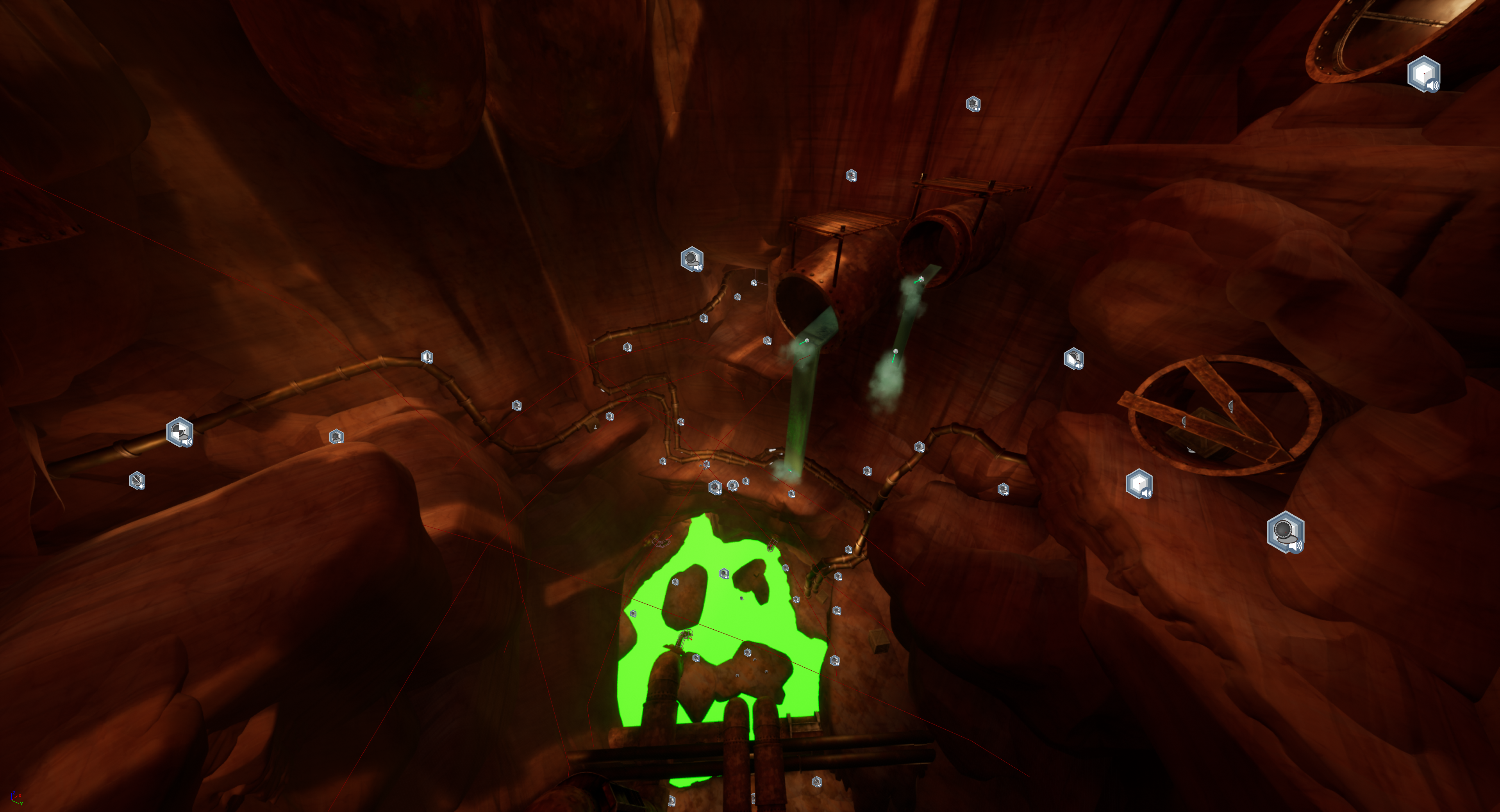
Late Development: Final Changes
As production neared its end, my priorities shifted largely to Combat Design and bug fixing as our levels had finally received the full might of the art team and were looking and feeling better than ever.
I worked closely with sound, VFX, and animation teams to improve the look, sound, and feel for each weapon and gadget. Each weapon animation received accompanying VFX, timed audio cues, camera shake, and controller rumble to make each one feel satisfying and weighty.
My personal favorites were the effects for the melee weapons which needed custom camera movements to accompany the animations and make each swing feel powerful.
Going into the last week and a half of production, I completed dozens of small adjustments and fixes, completed the tutorial level, and provided technical support for the rest of the team.
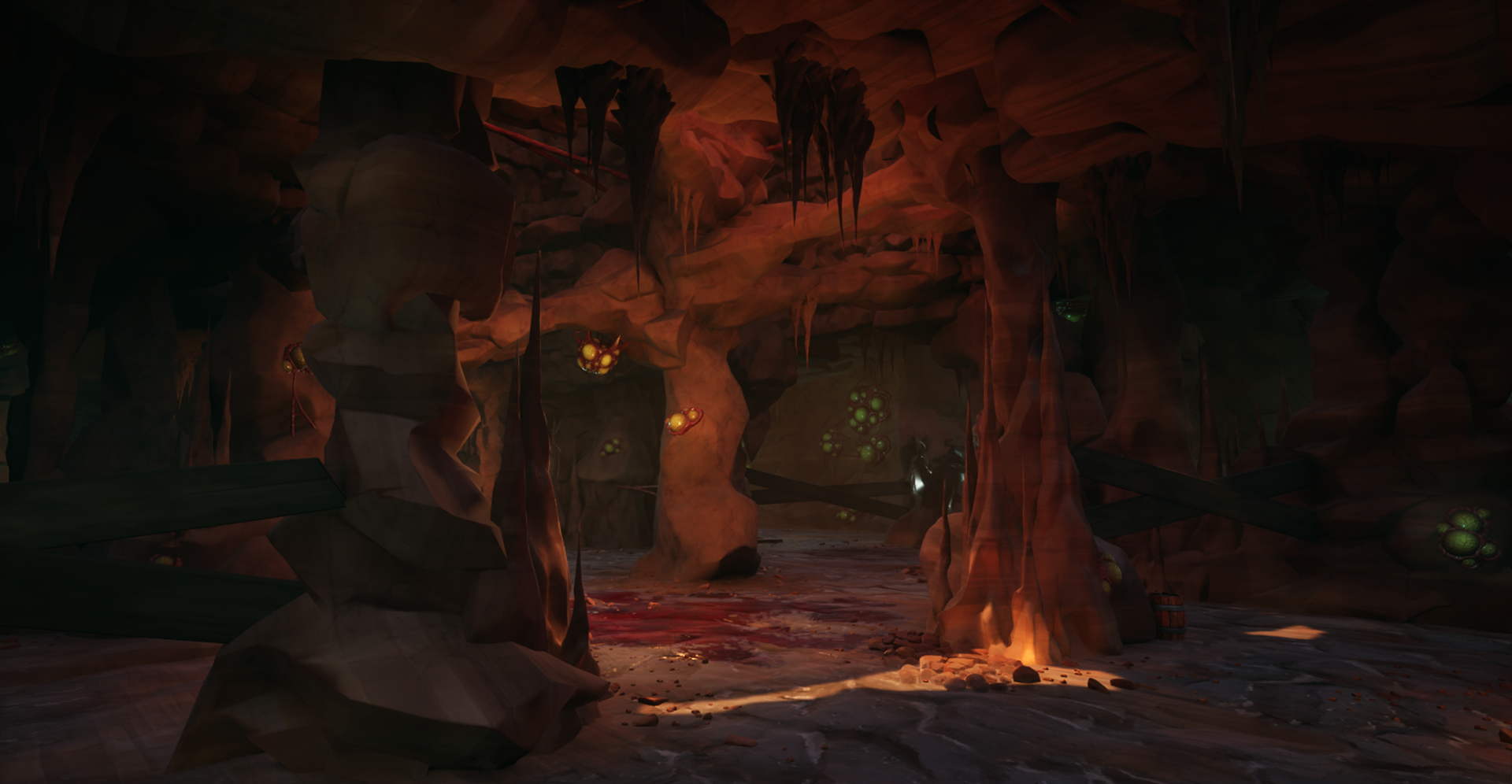

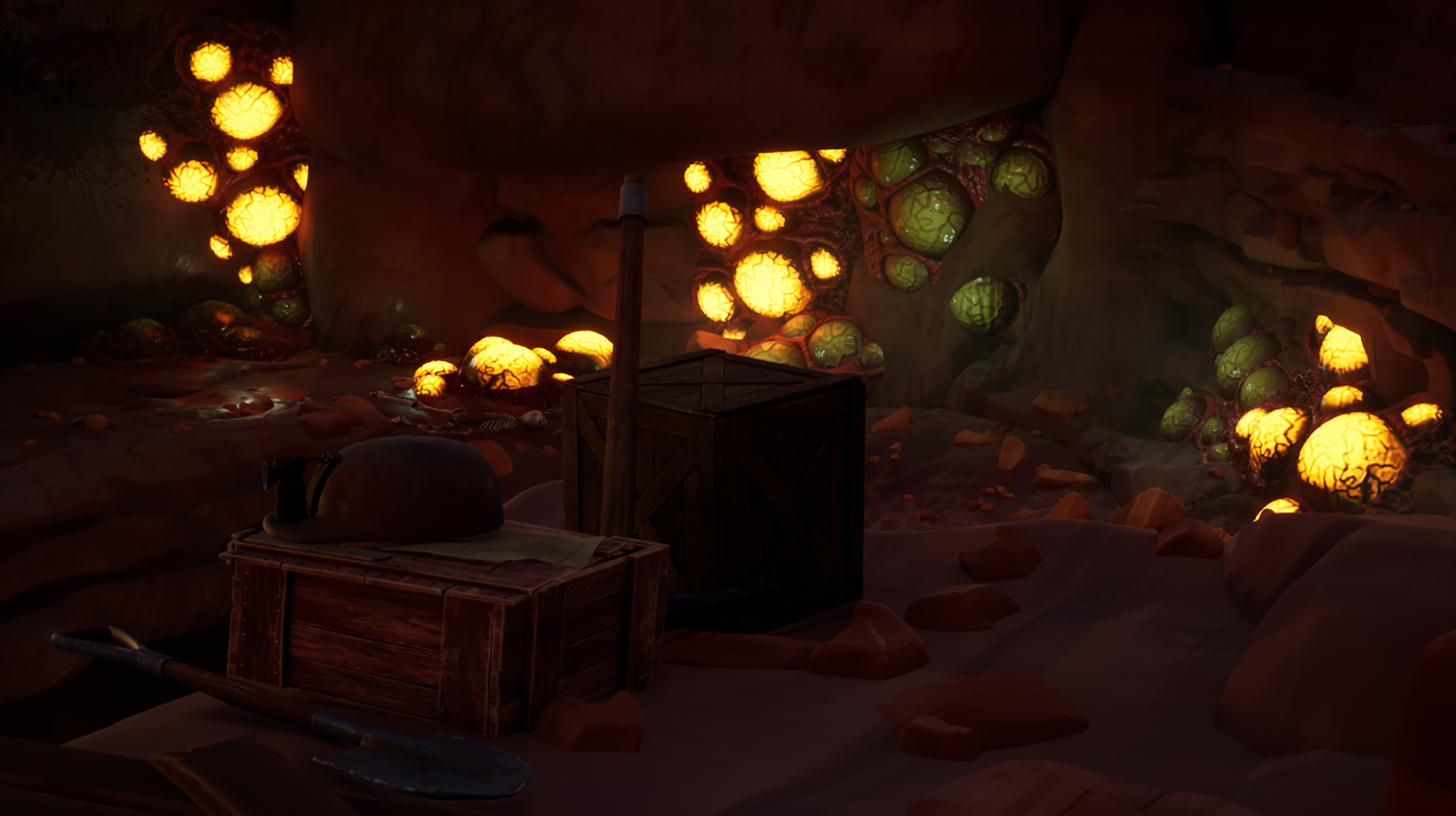

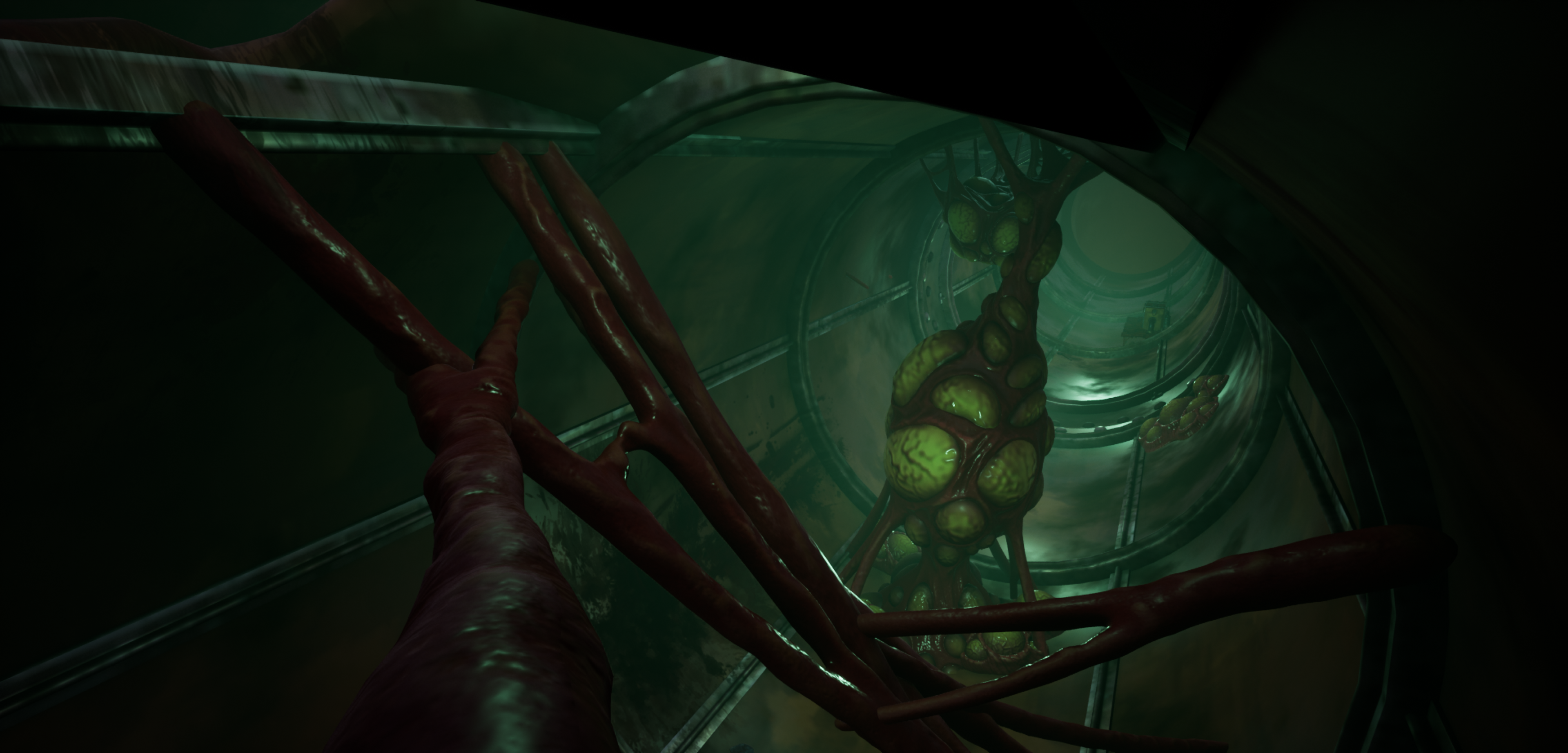

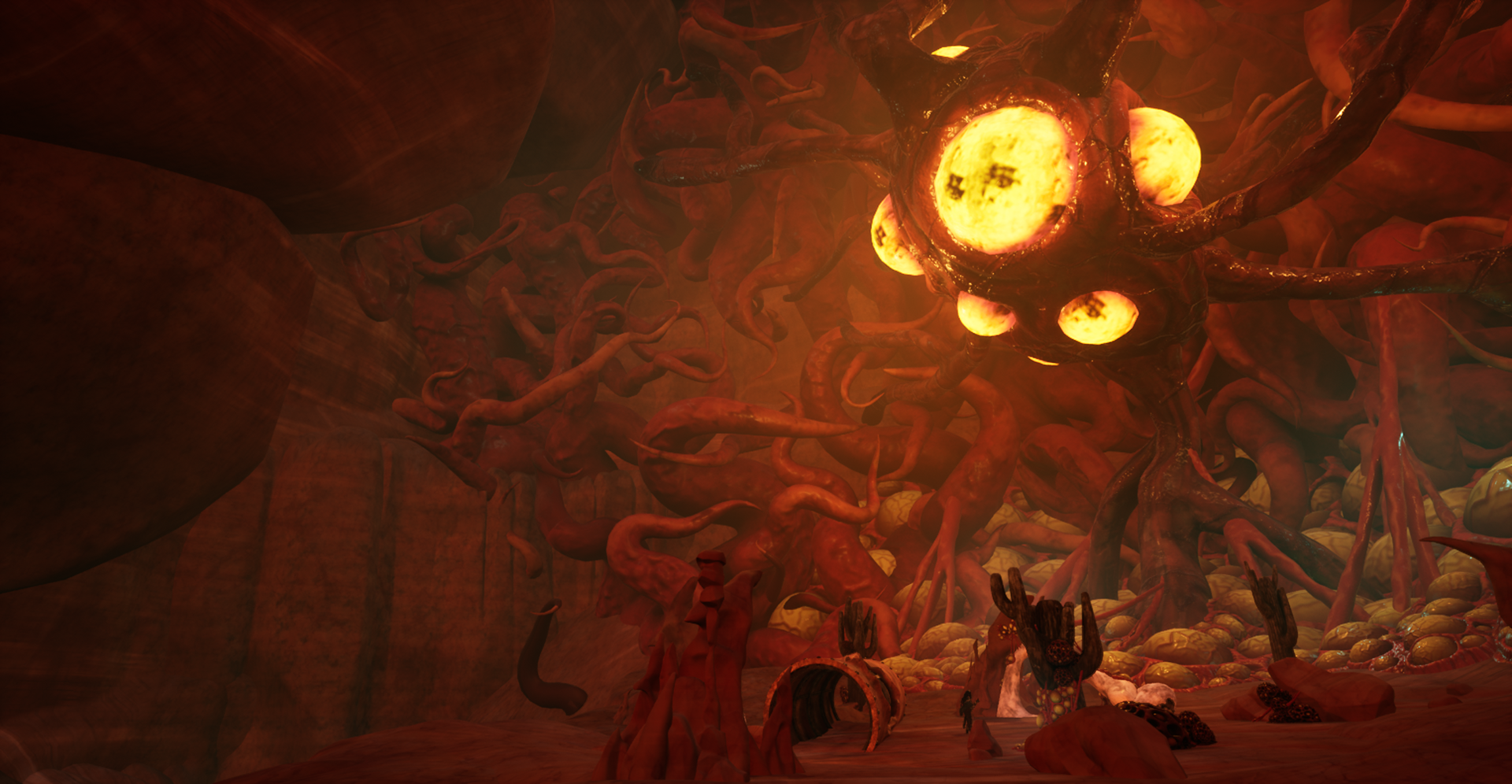
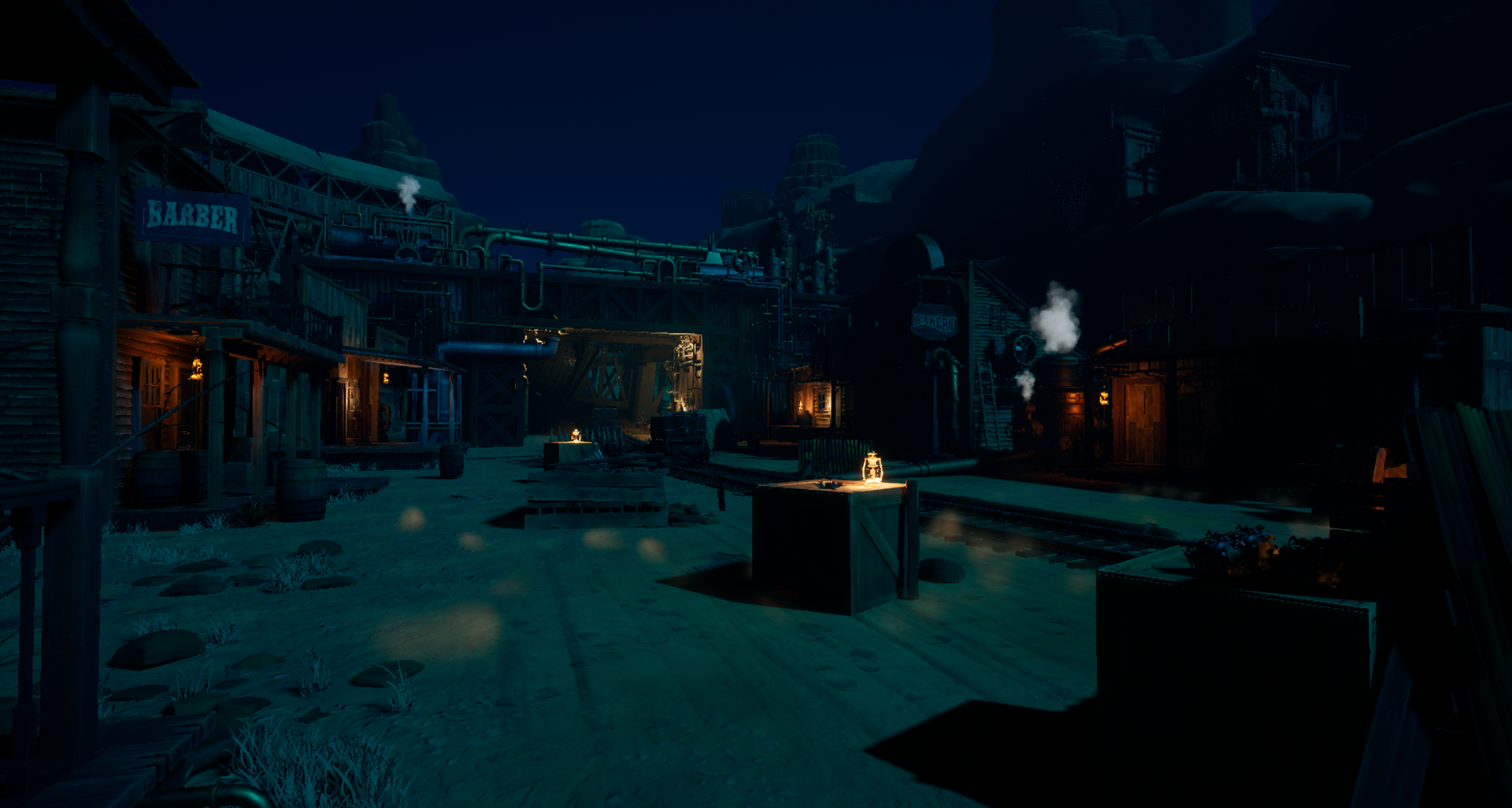
Conclusion
Beneath the Badlands was a hectic and satisfying project to be a part of. The scope and scale of the production was so ambitious and the work that went into making it happen was inspiring. The number of super talented people I worked with and learned from was staggering and I'm very thankful I had the chance to meet them.
Ultimately, I think Beneath the Badlands was a resounding success. The level of quality and craftsmanship that each person poured into this game is amazing and I'm so excited to see where everyone goes from here.
I do believe that Beneath the Badlands has the opportunity to grow and become a more complete version of itself and I am waiting for the opportunity to develop it further. At the end of the project I felt that we had only just reached the point of polish and refinement and was sad to move on leaving it unfinished.
Another round of development with fresh eyes and lessons learned will hopefully be the push that puts Beneath the Badlands into the world!